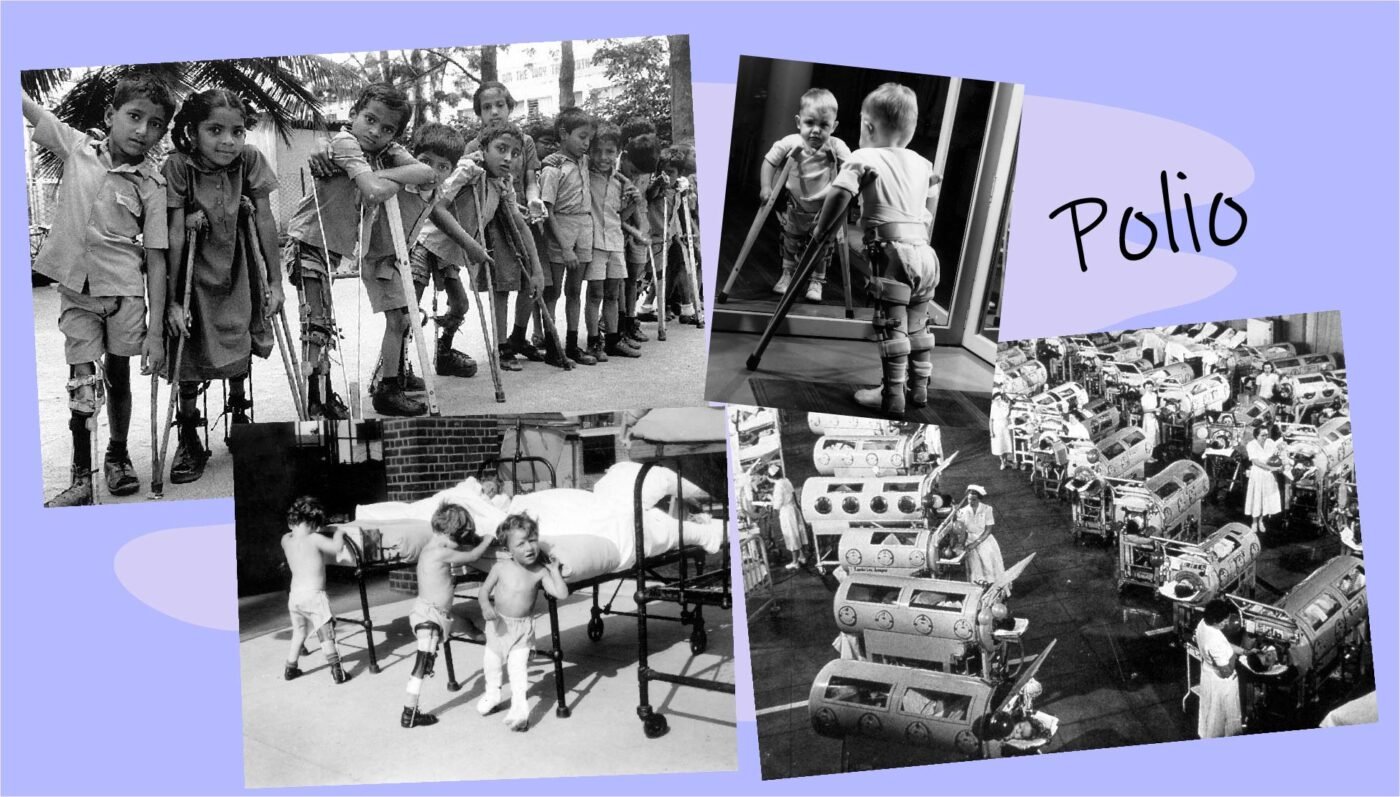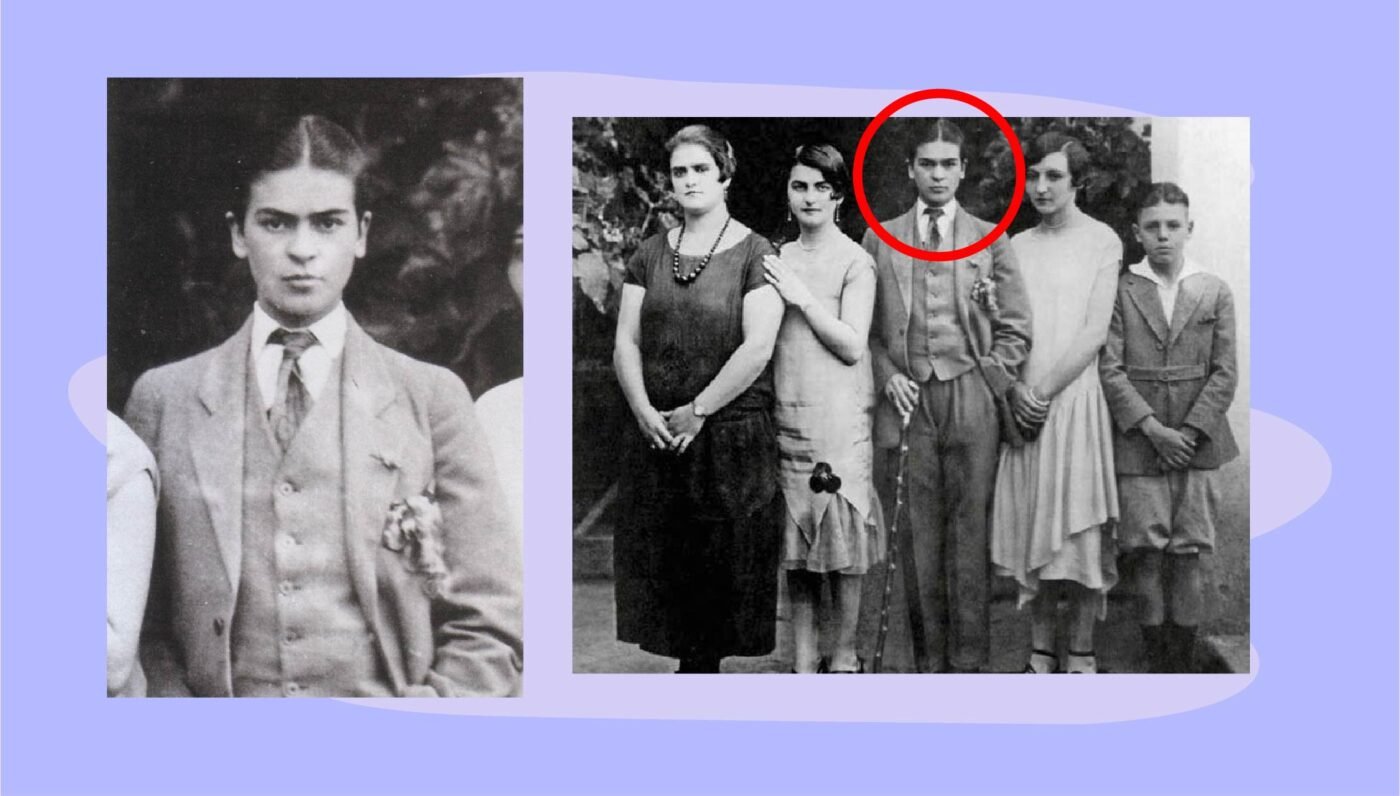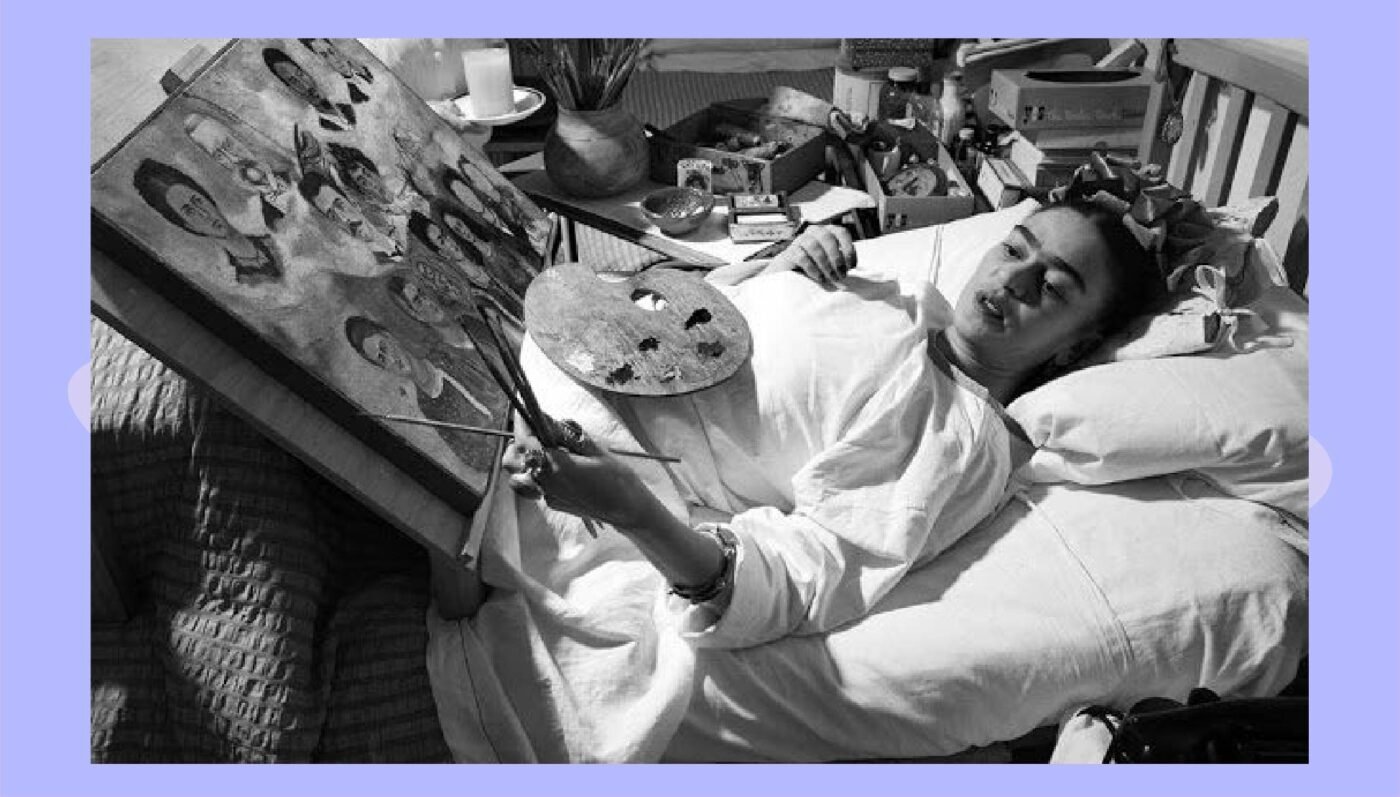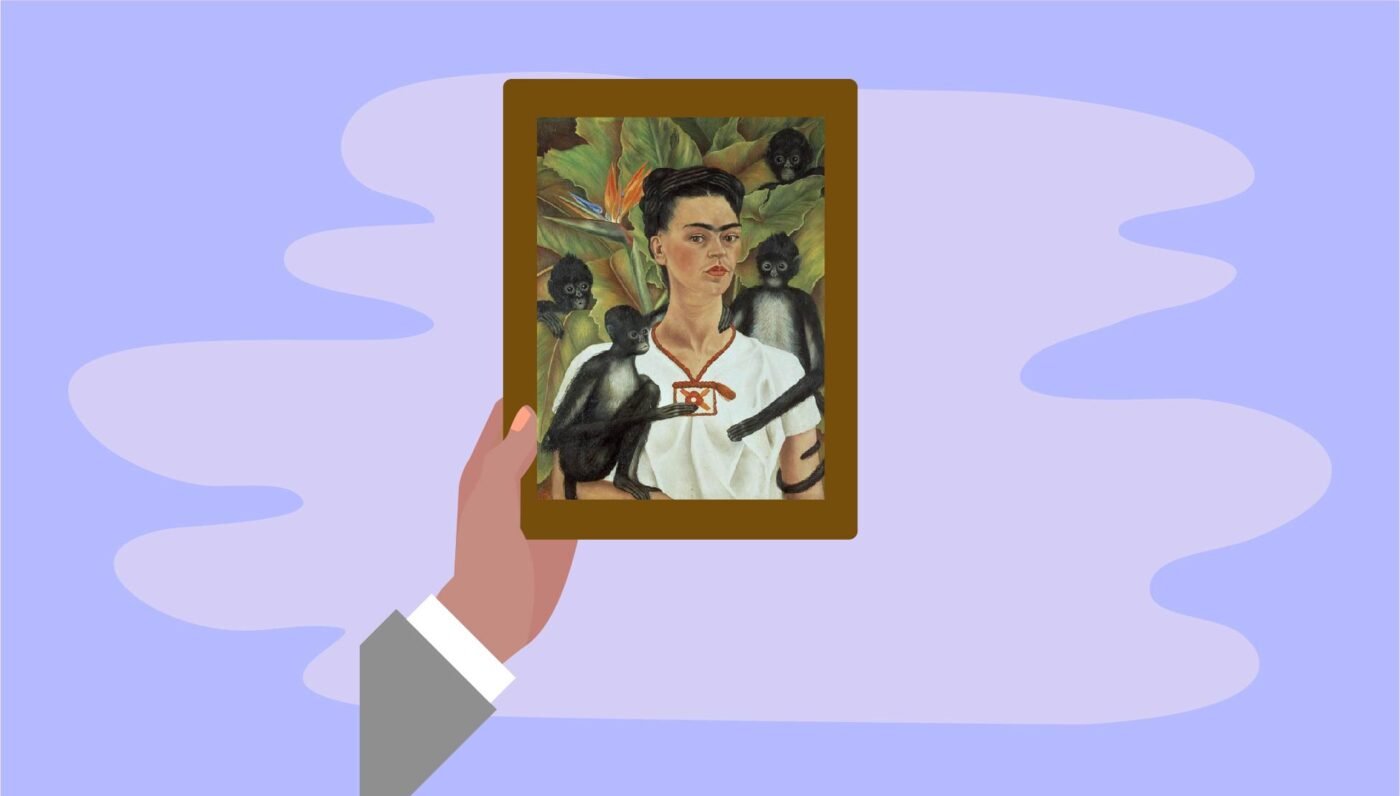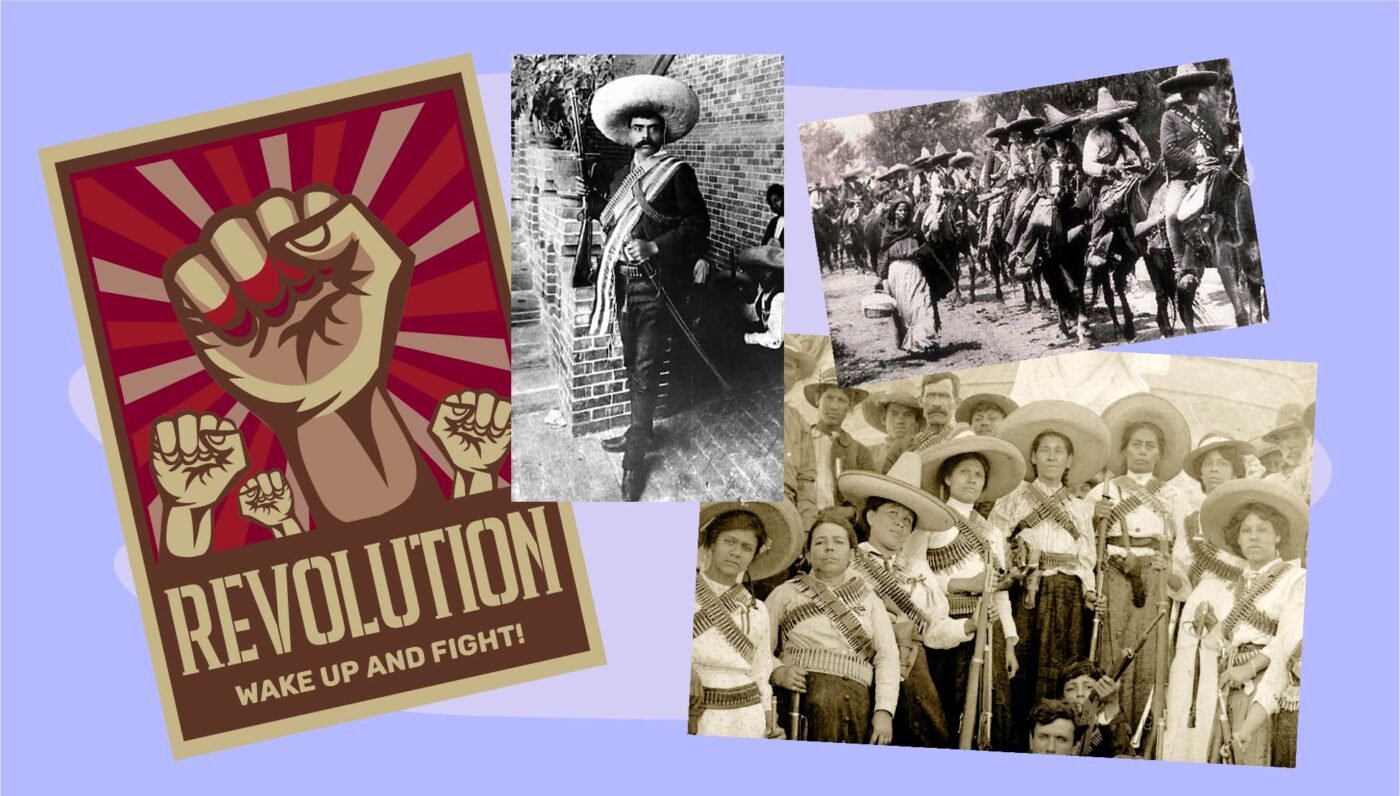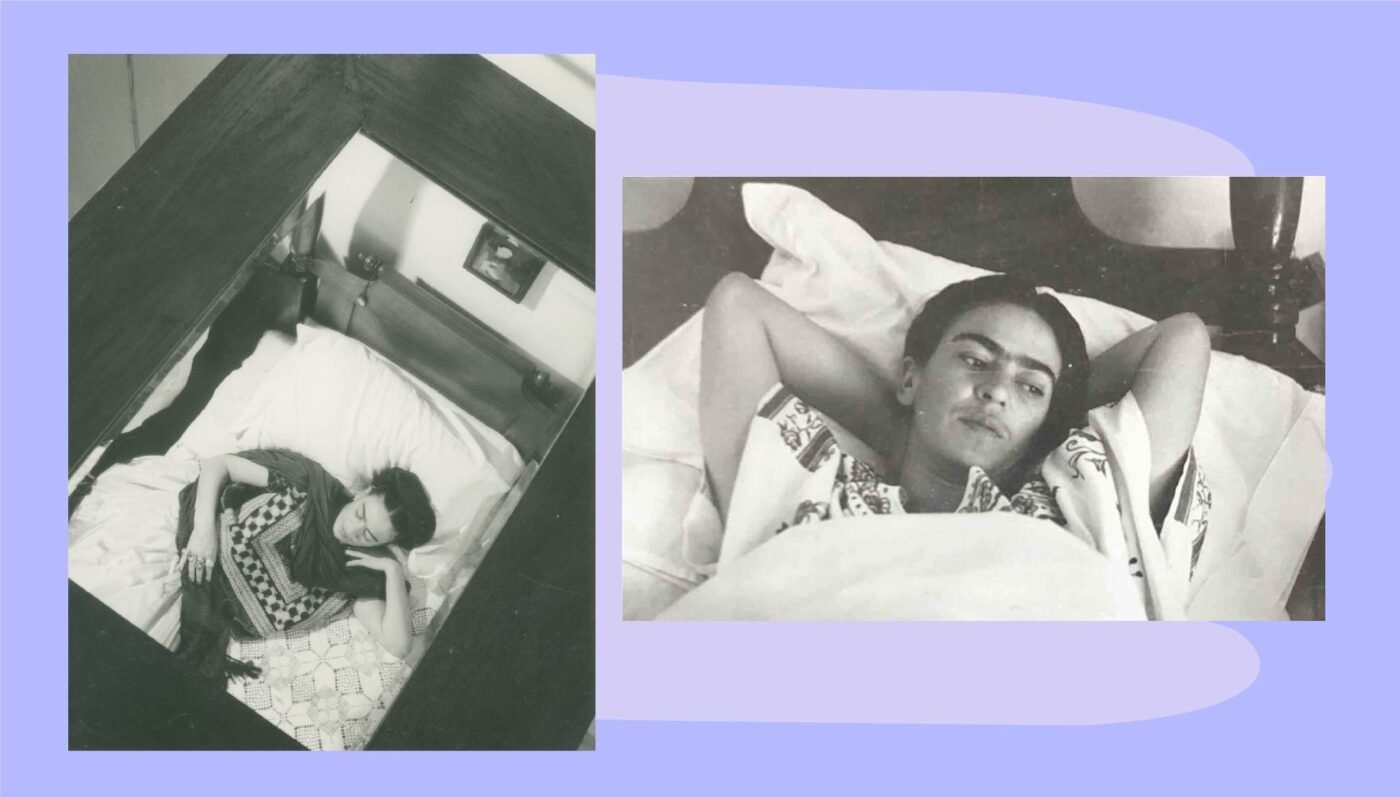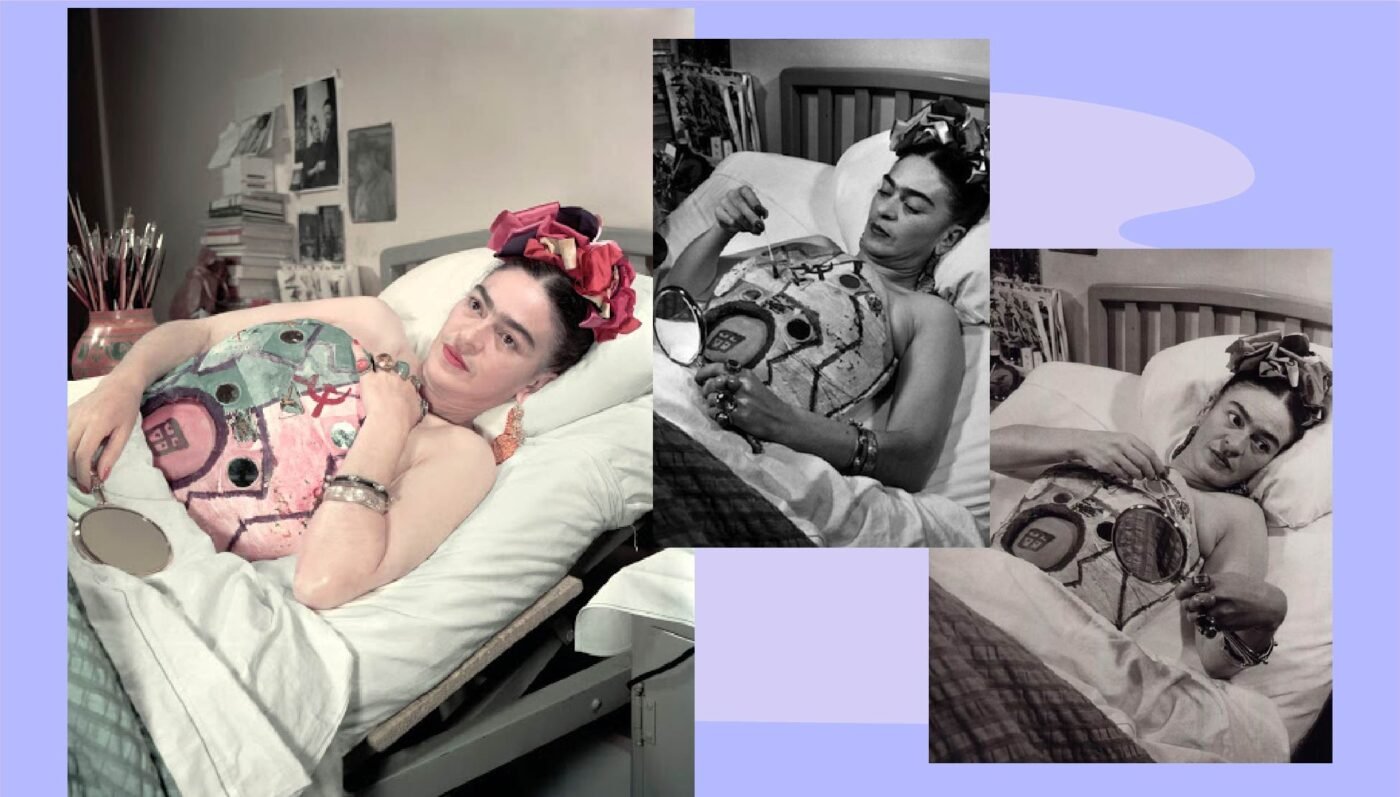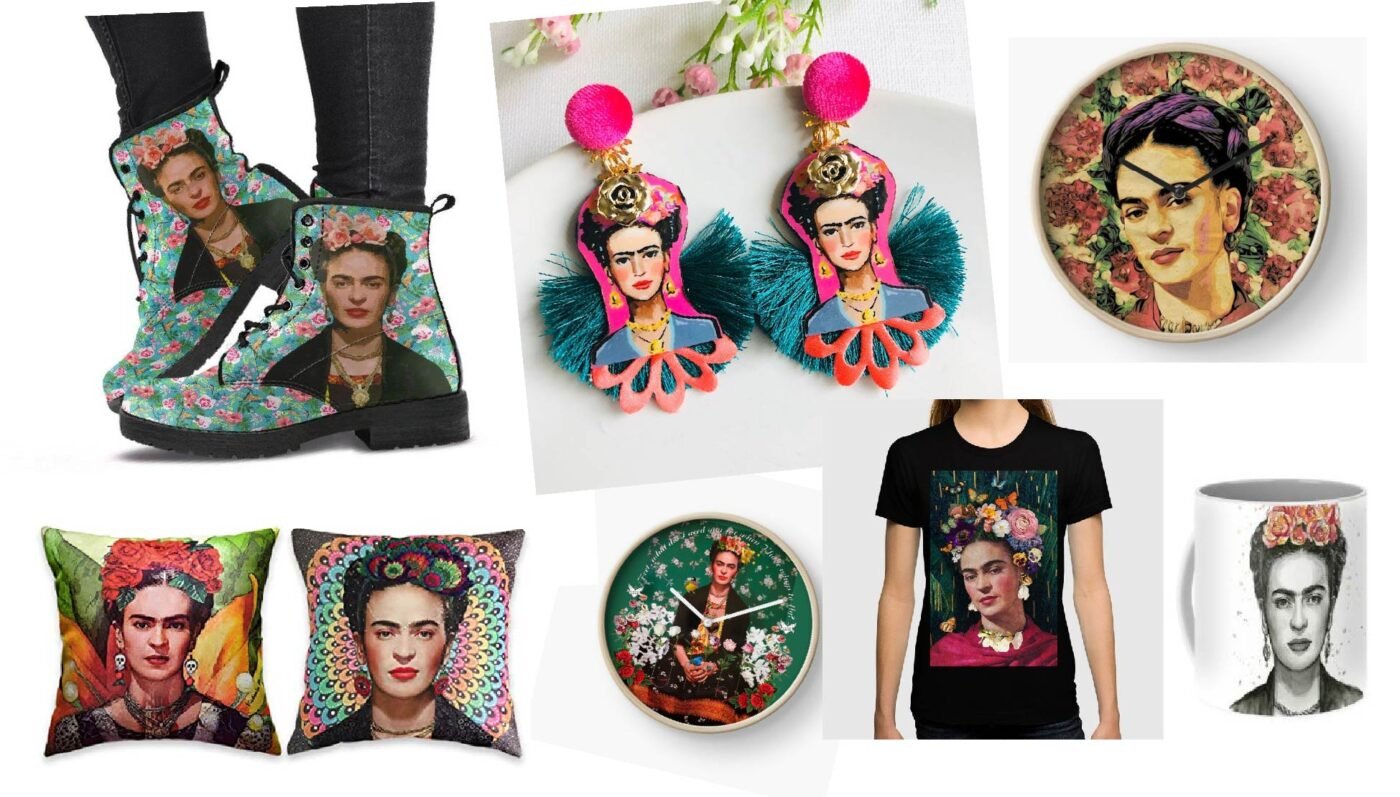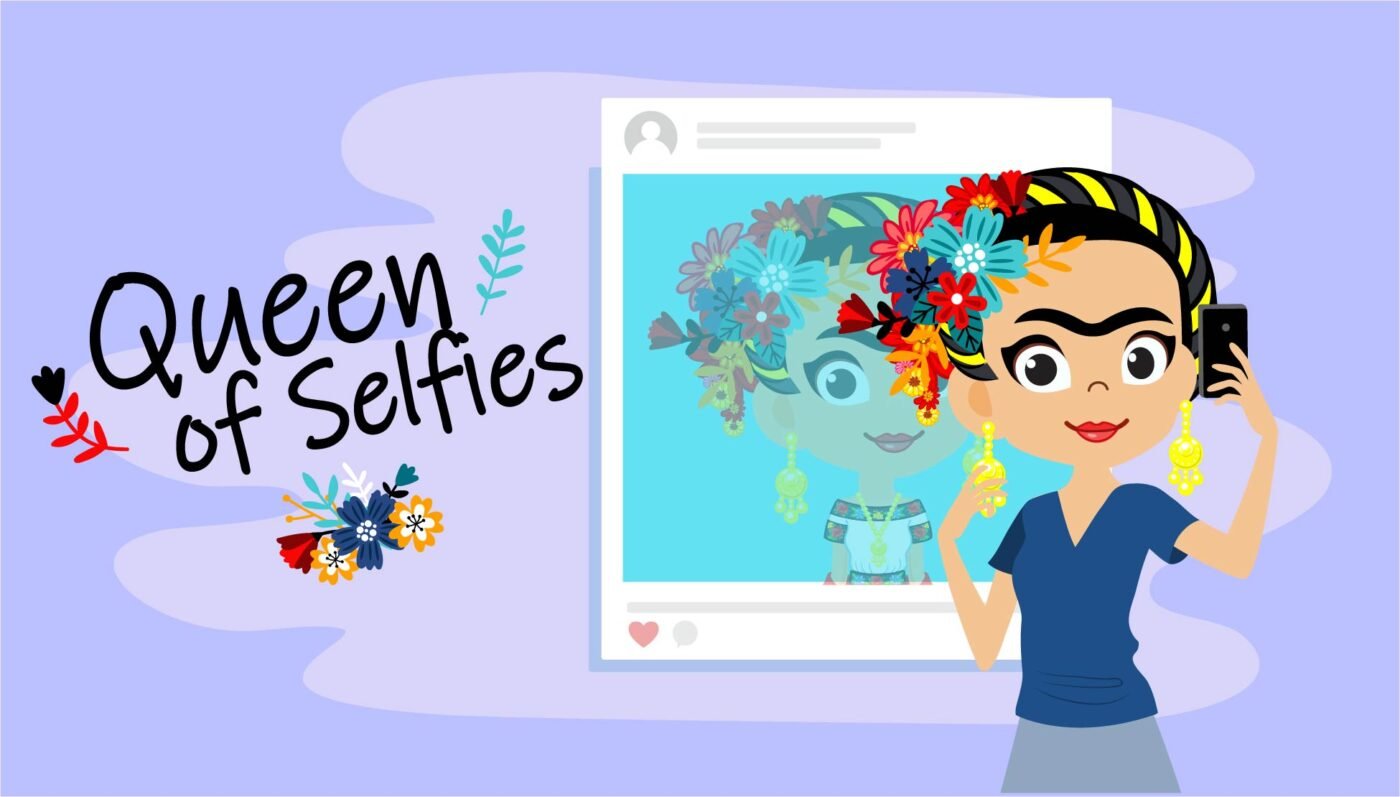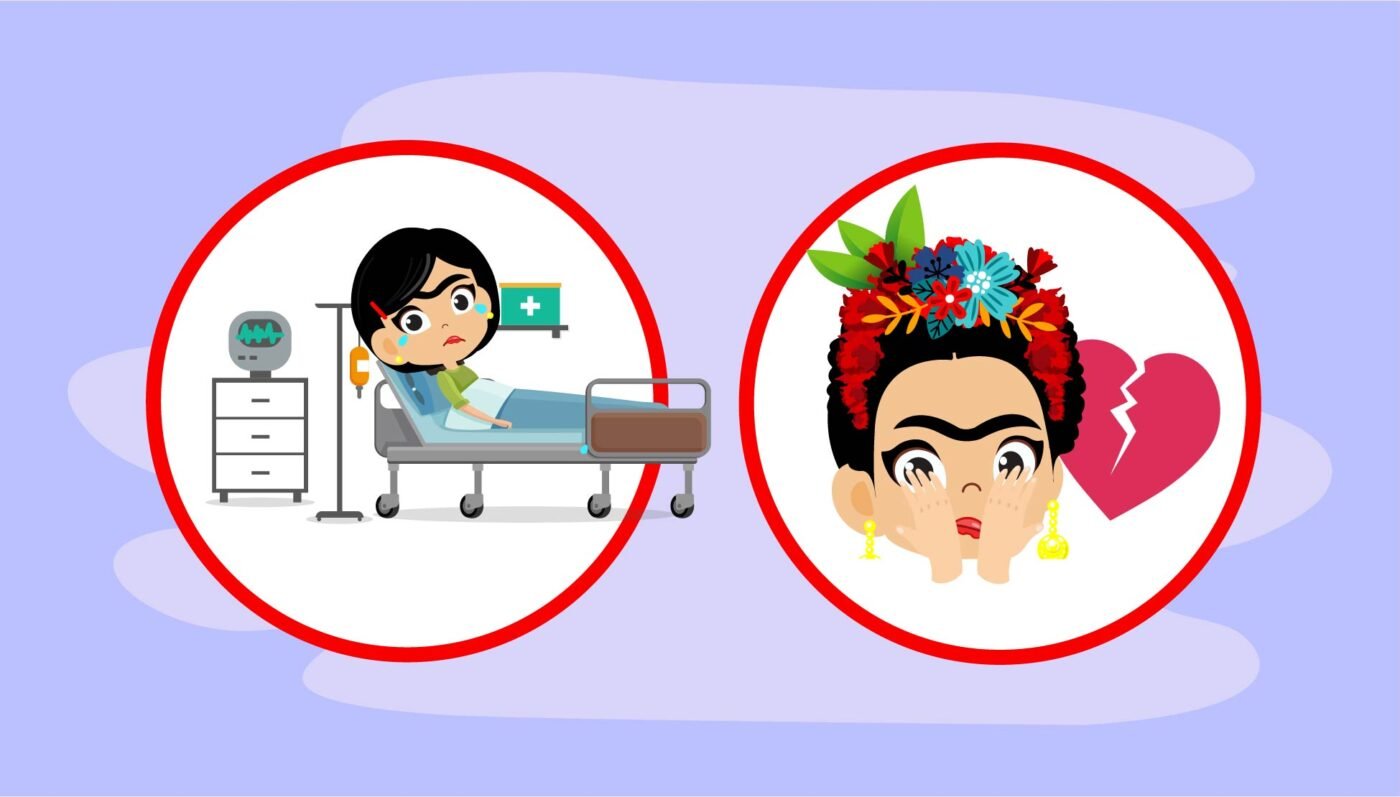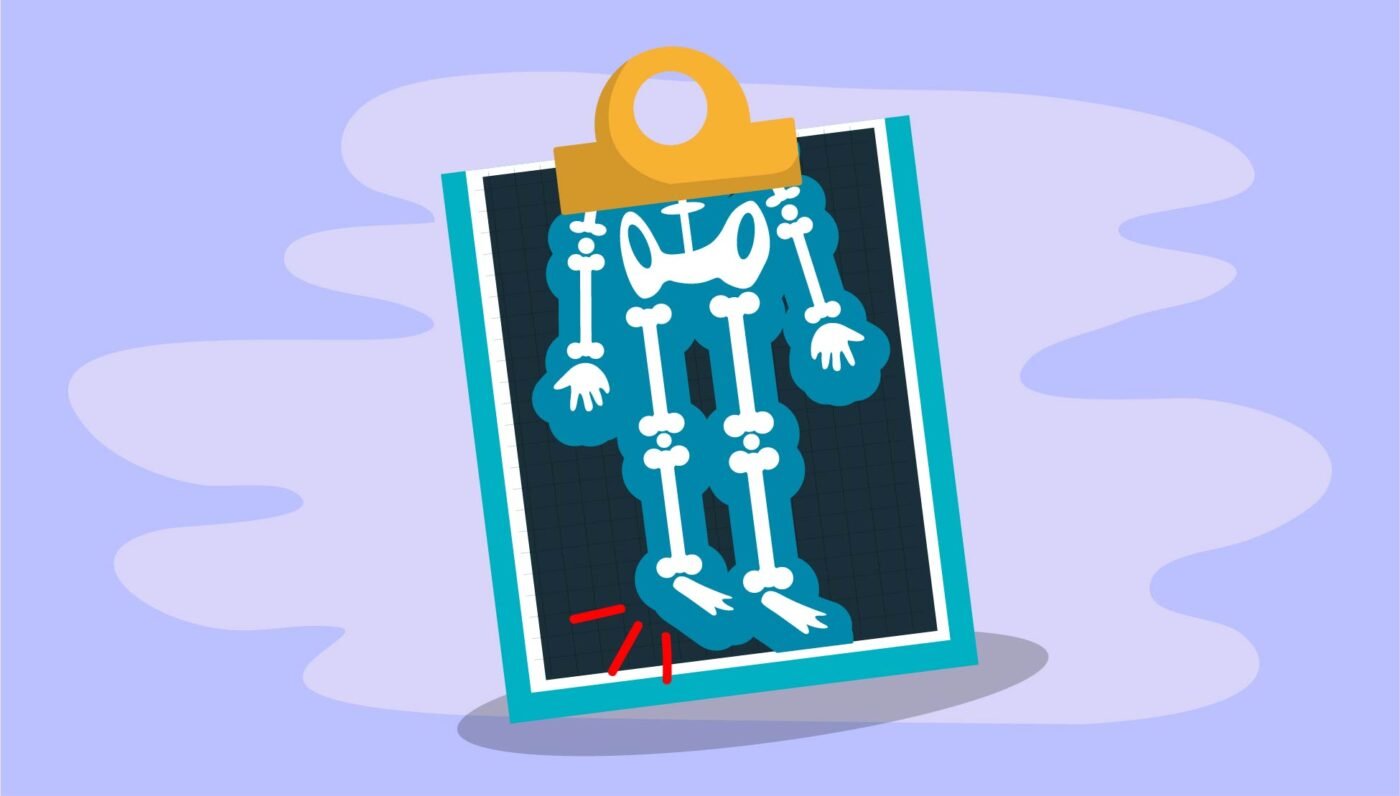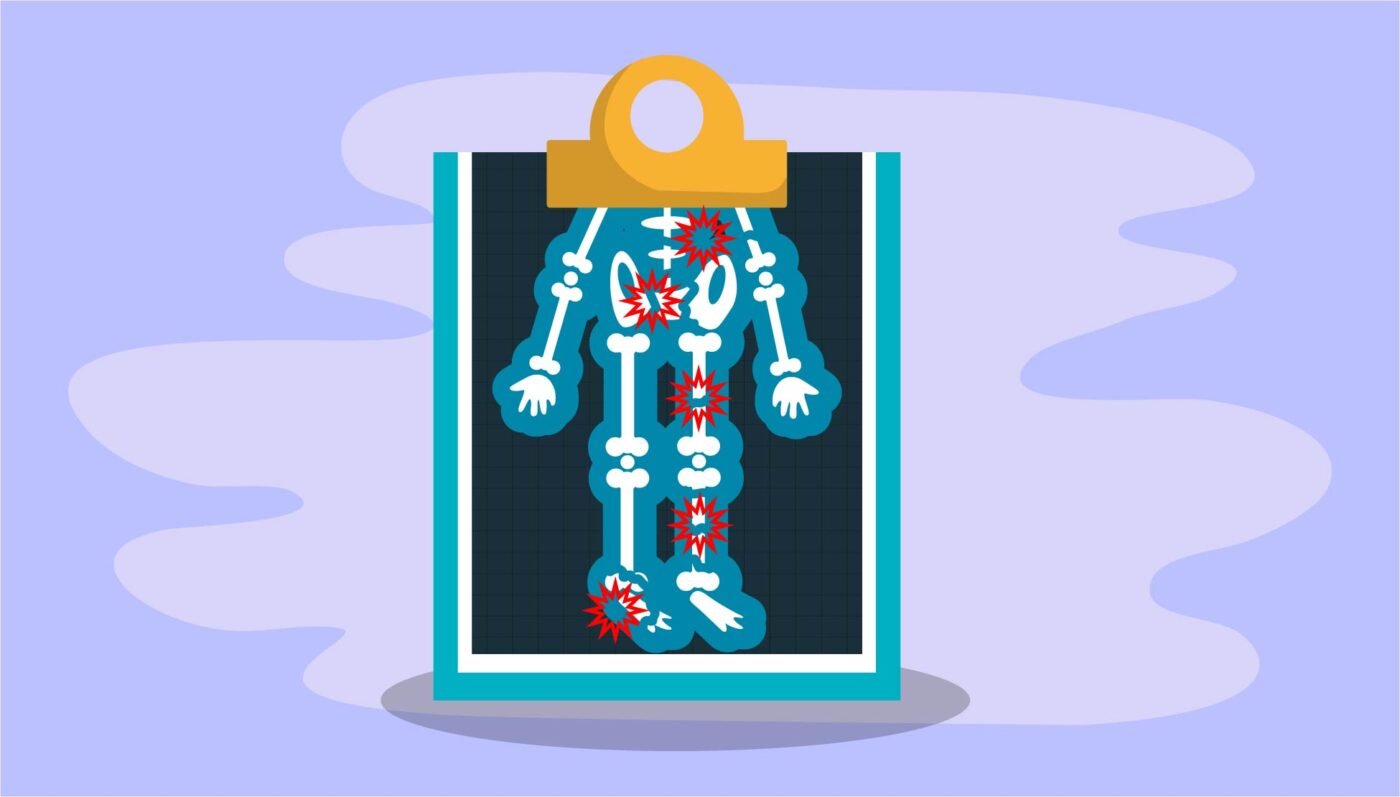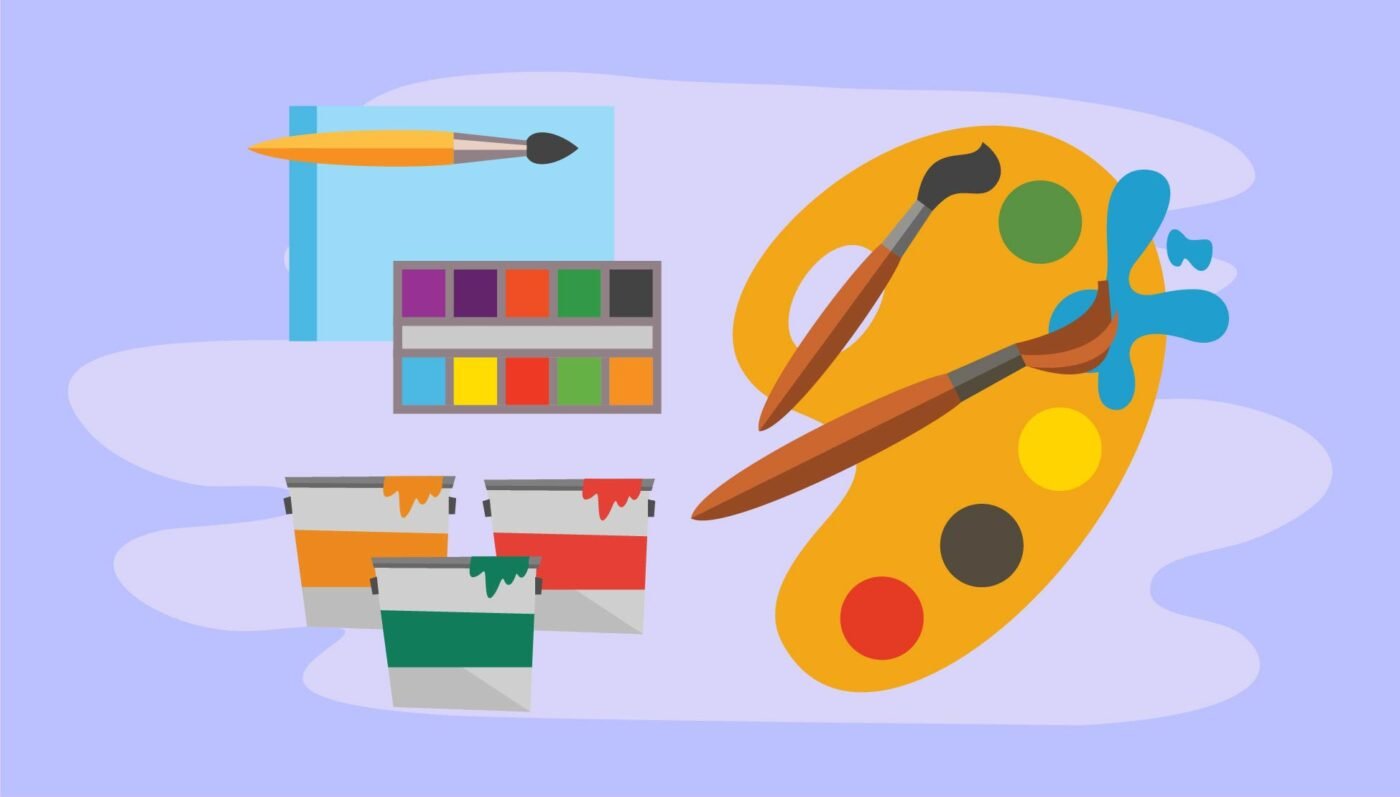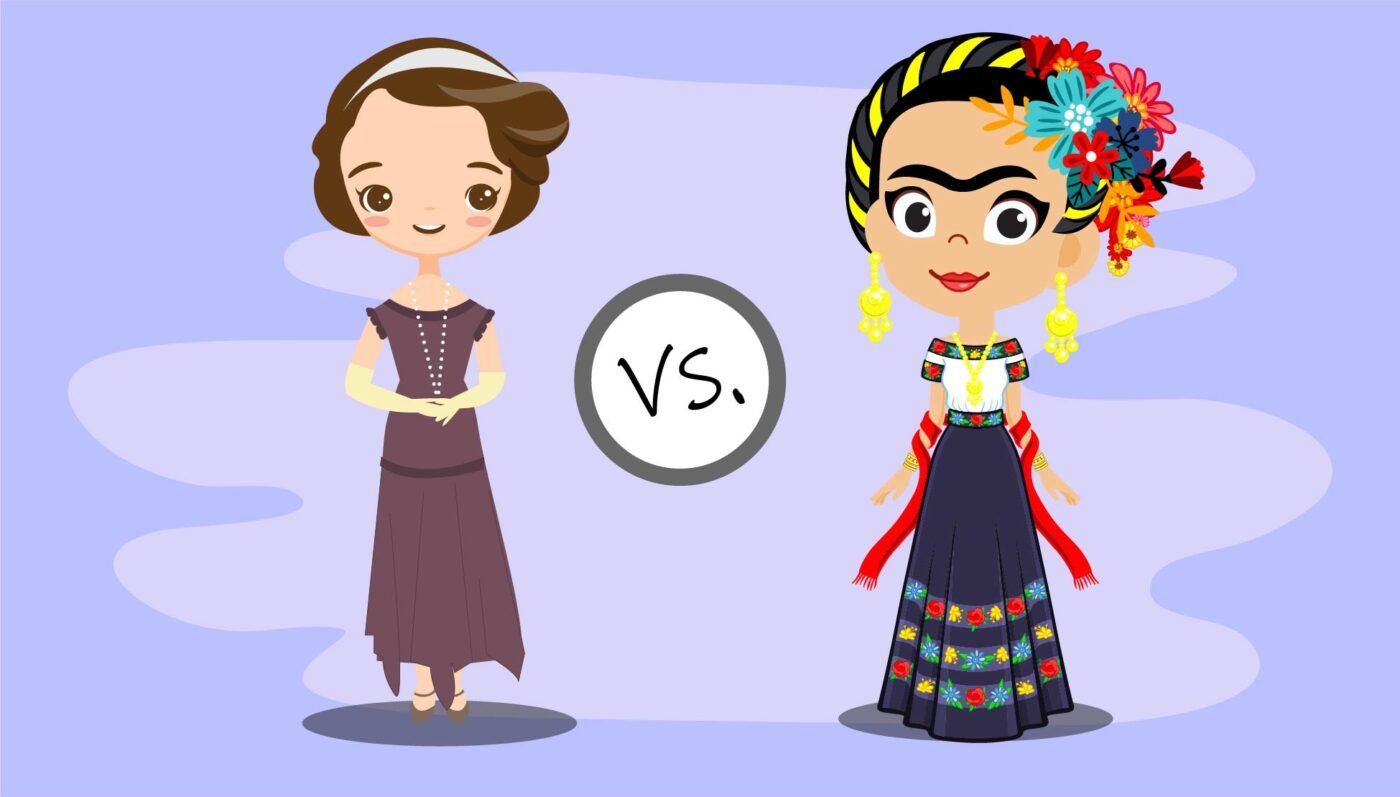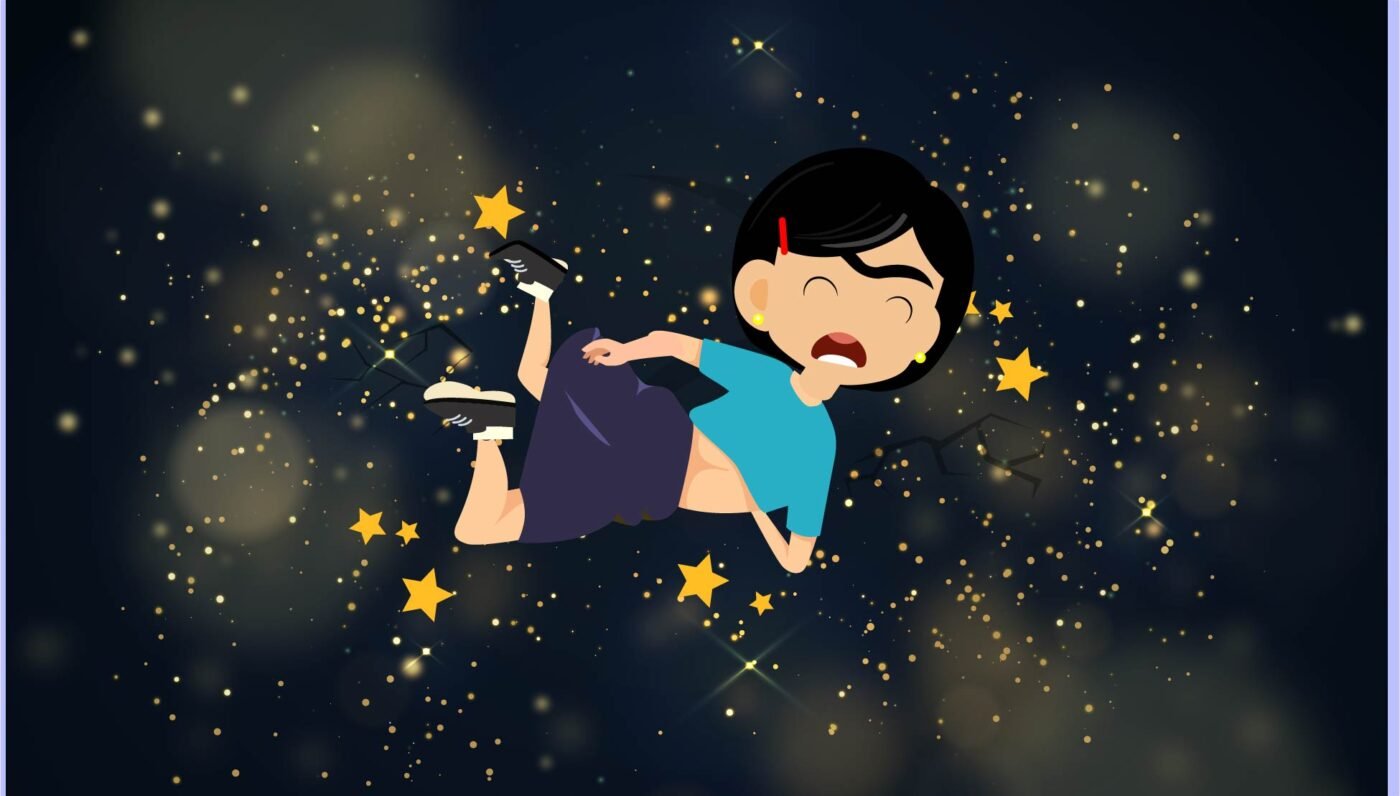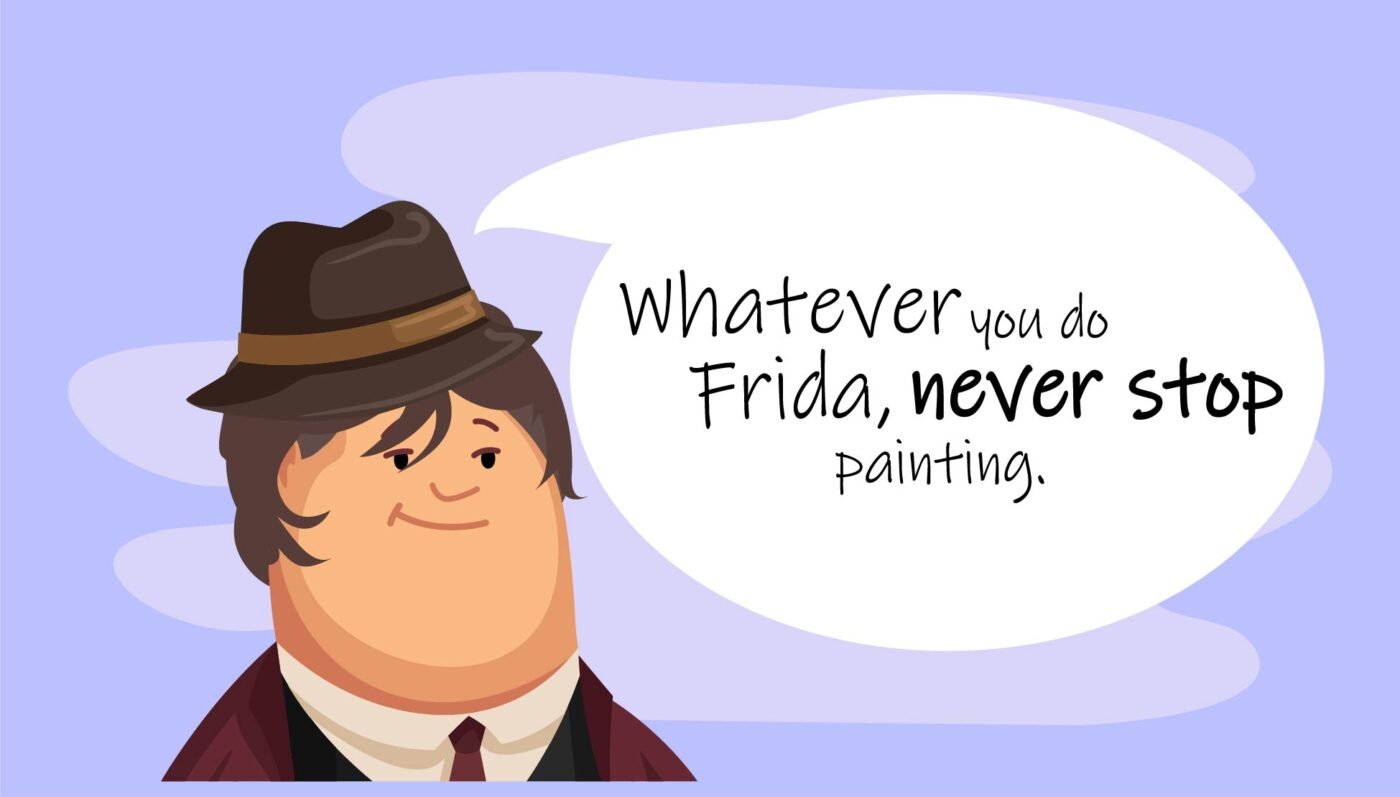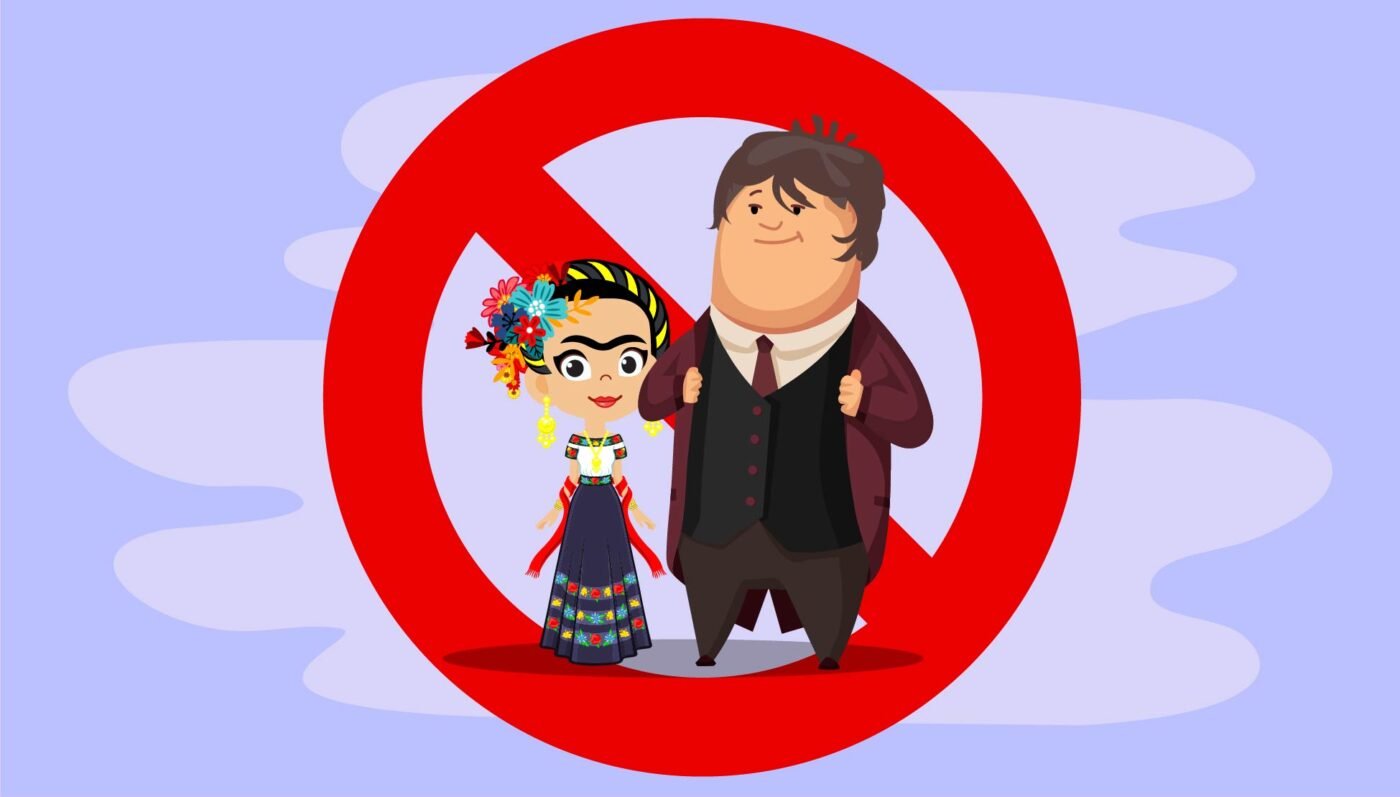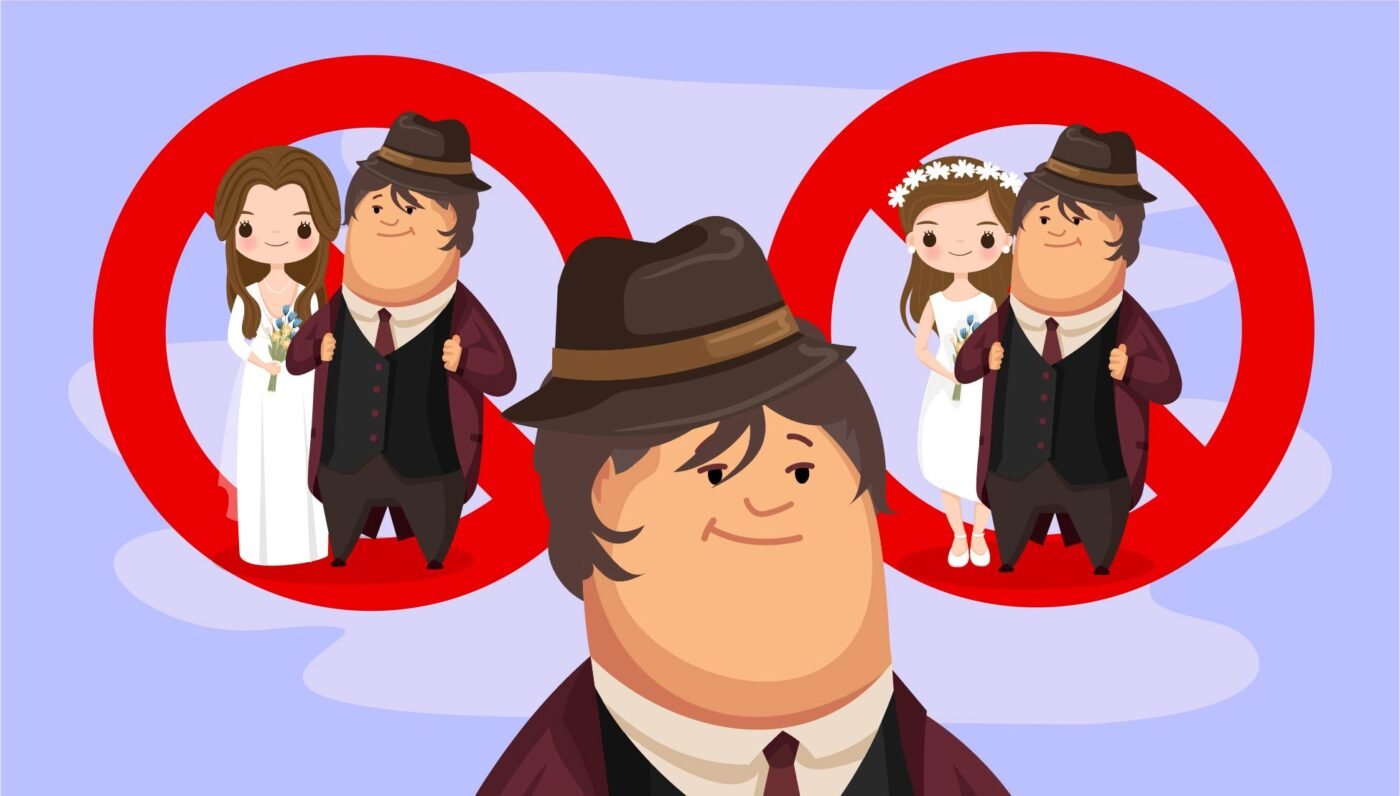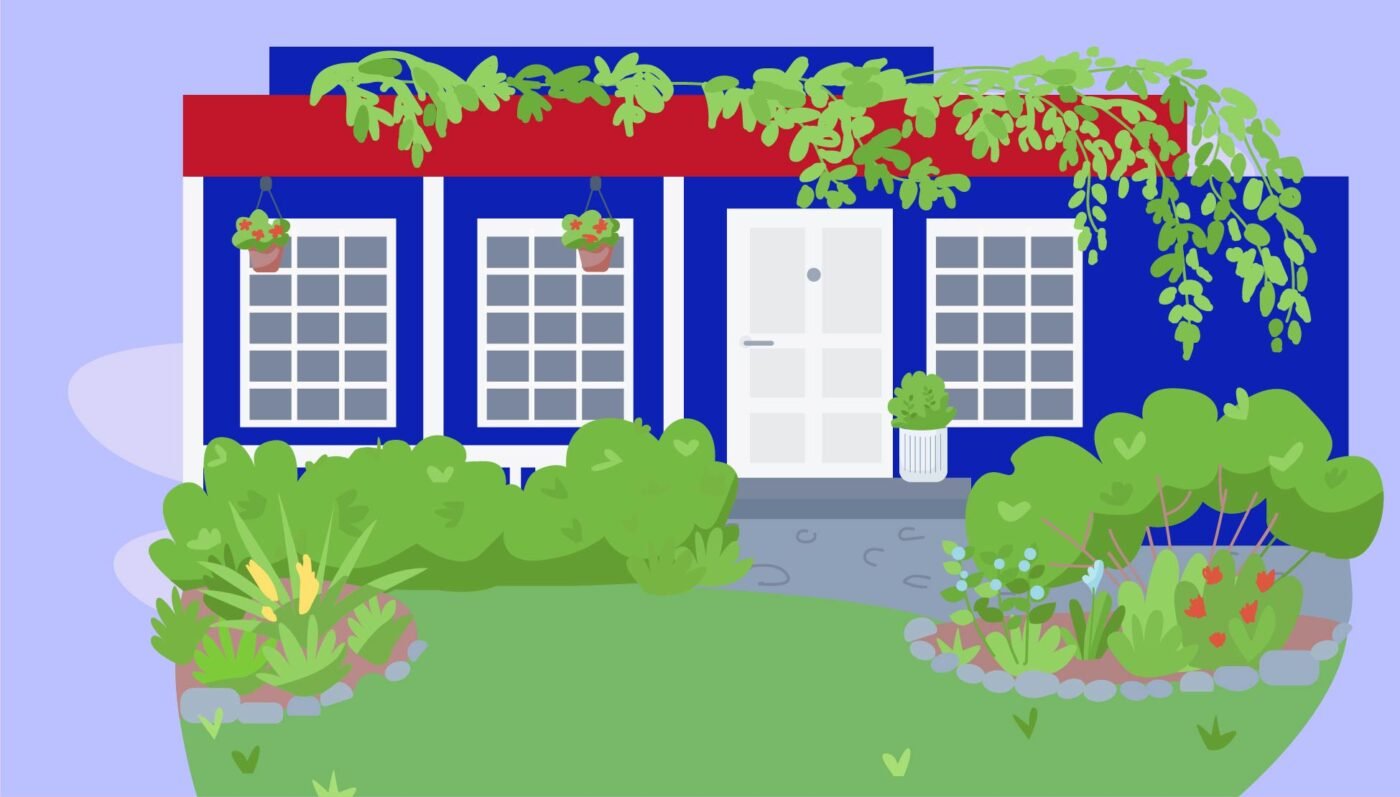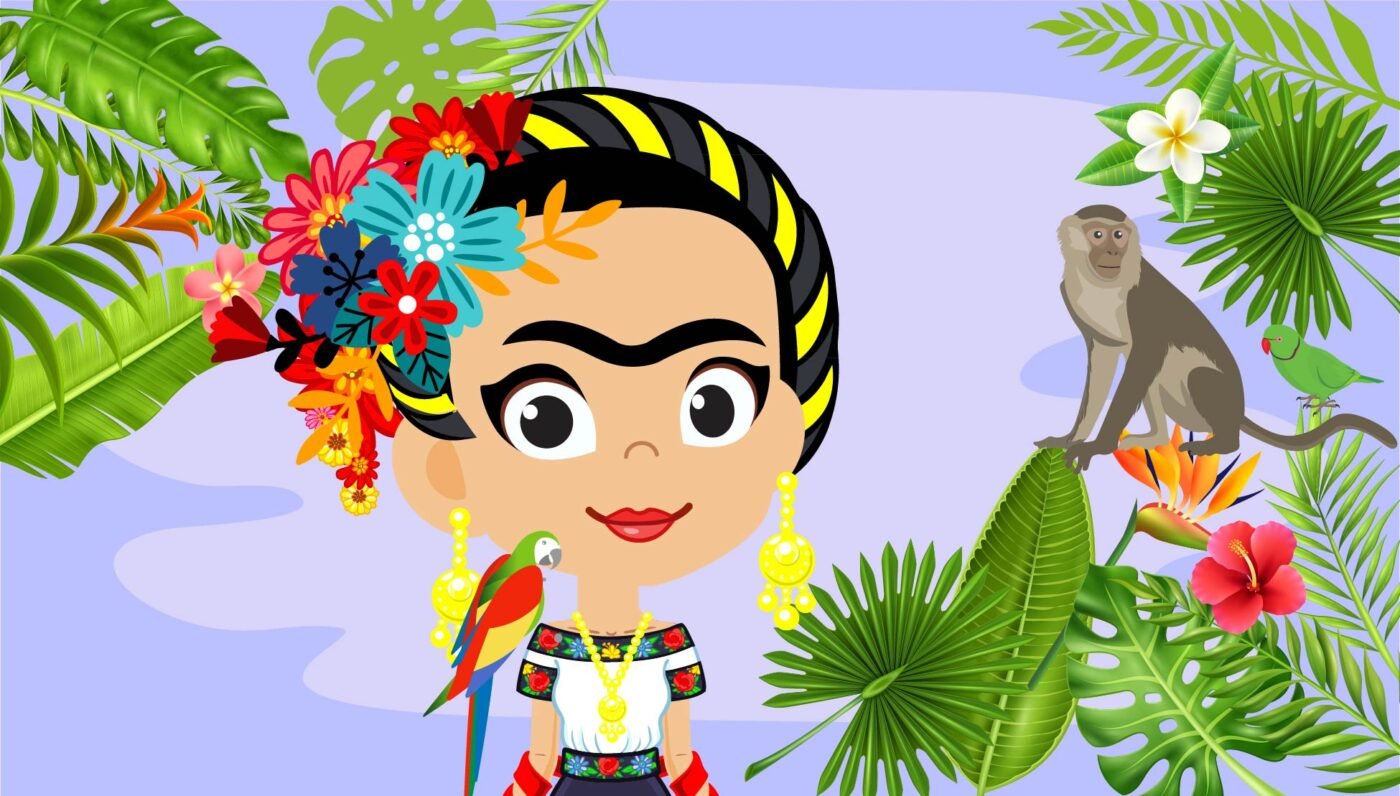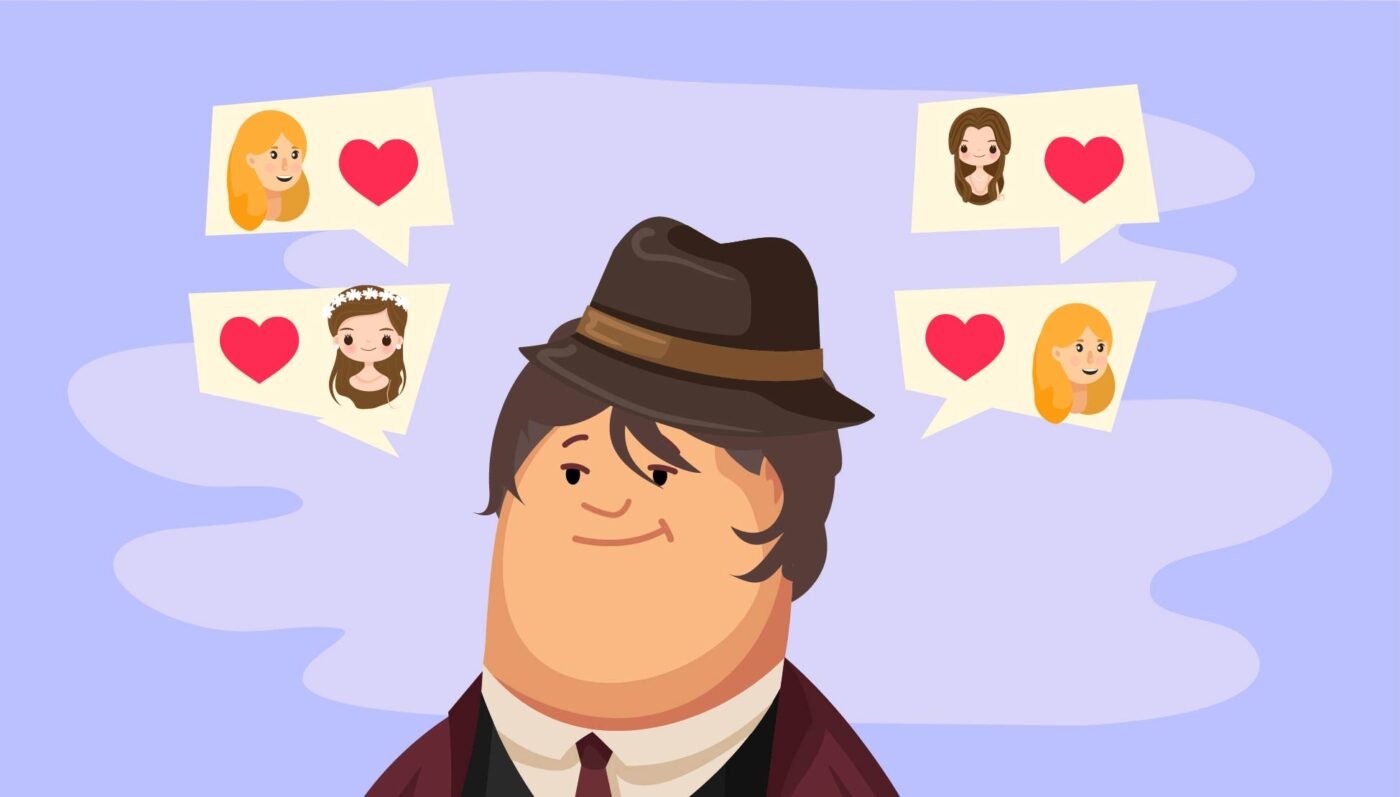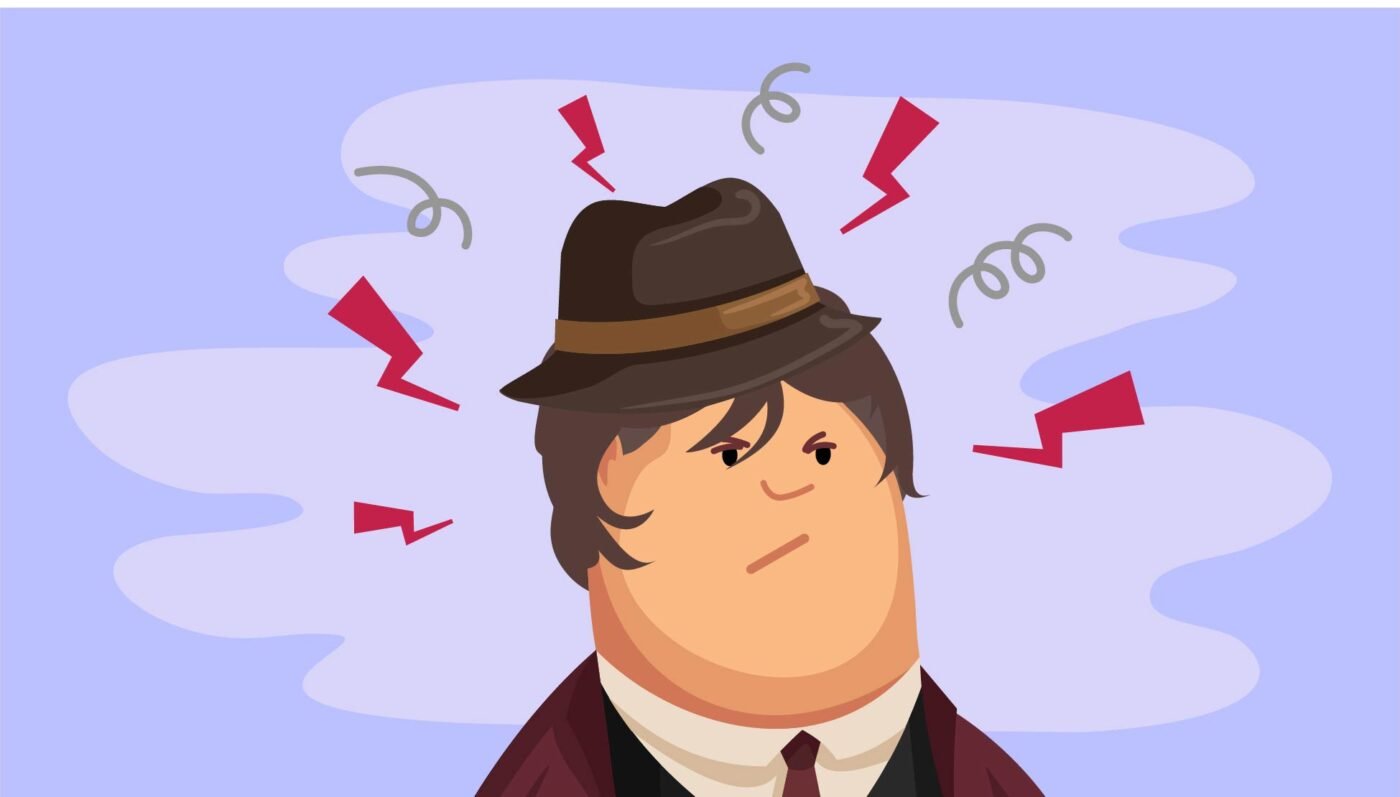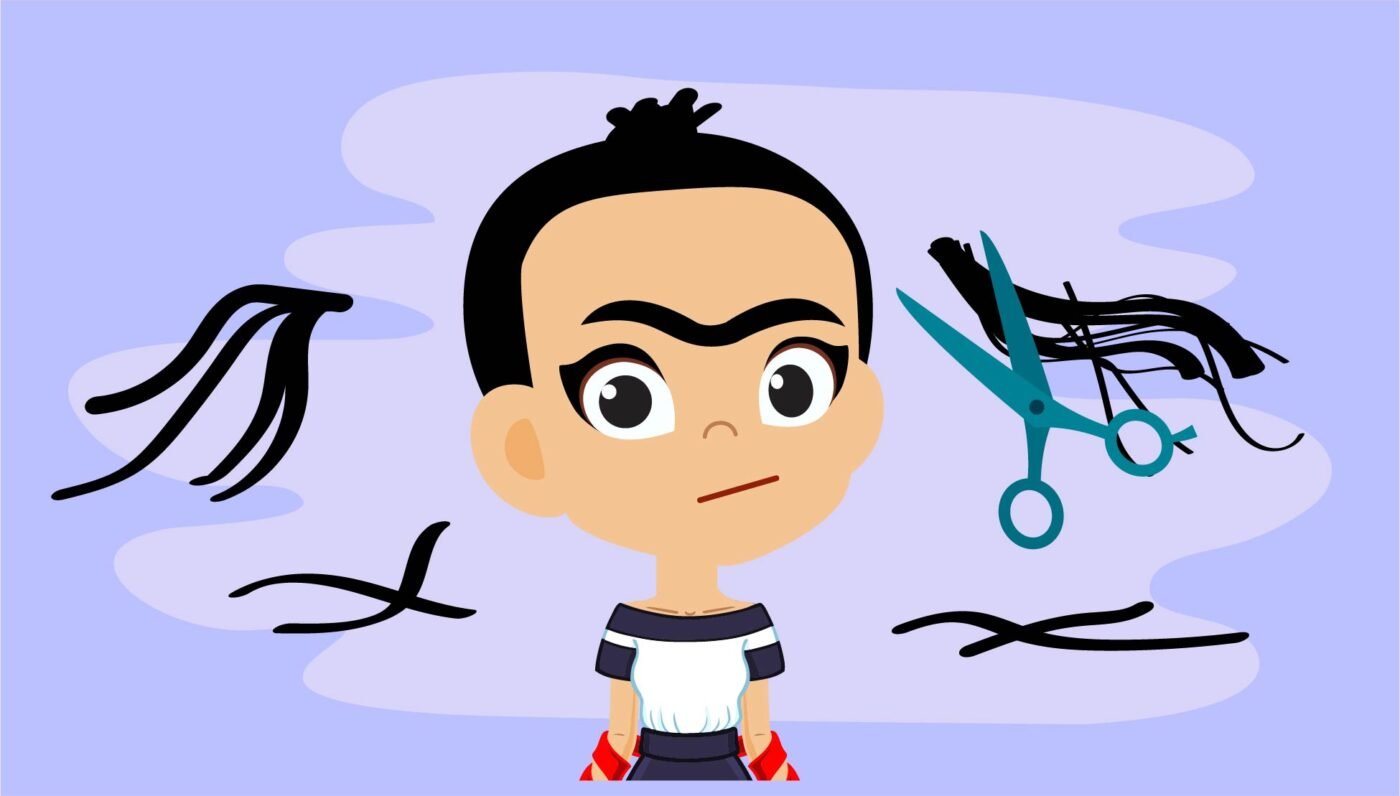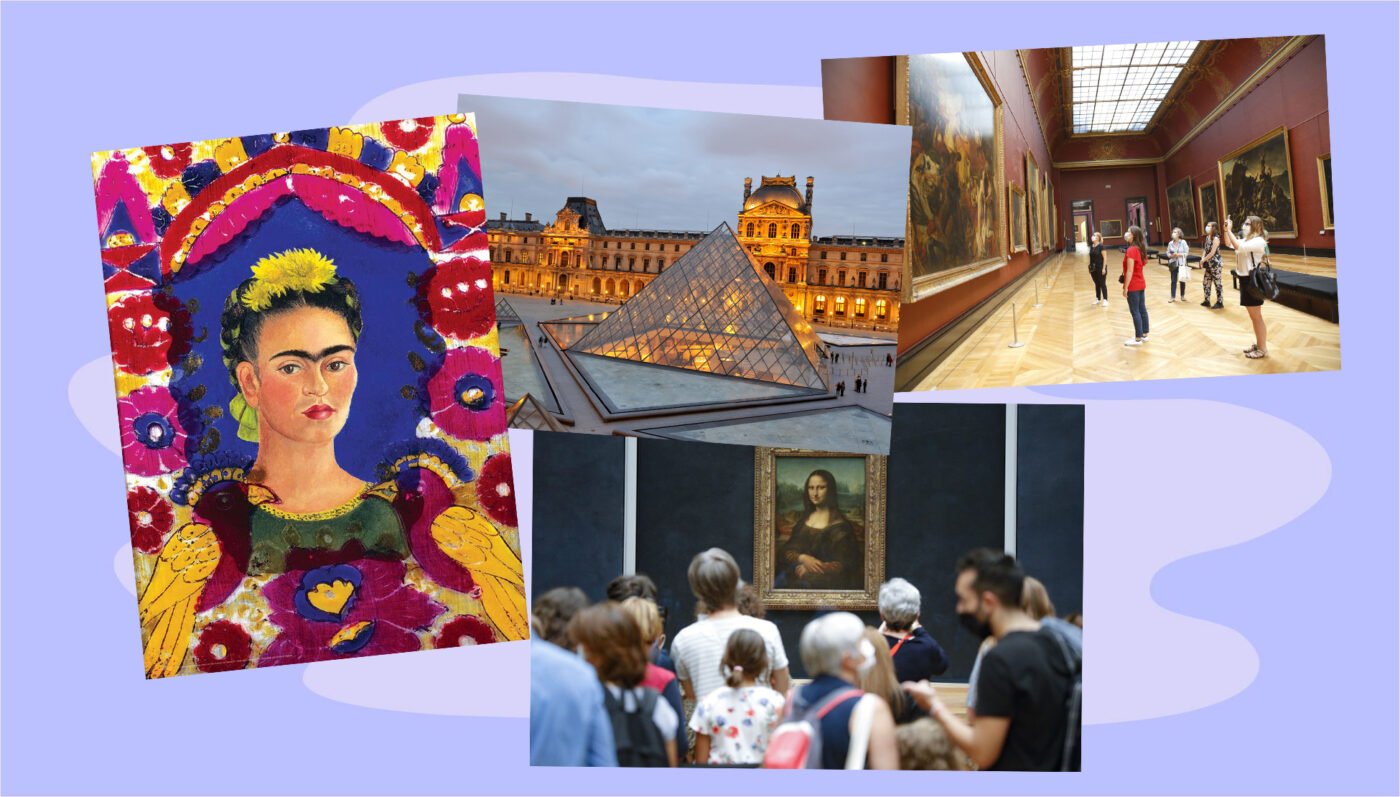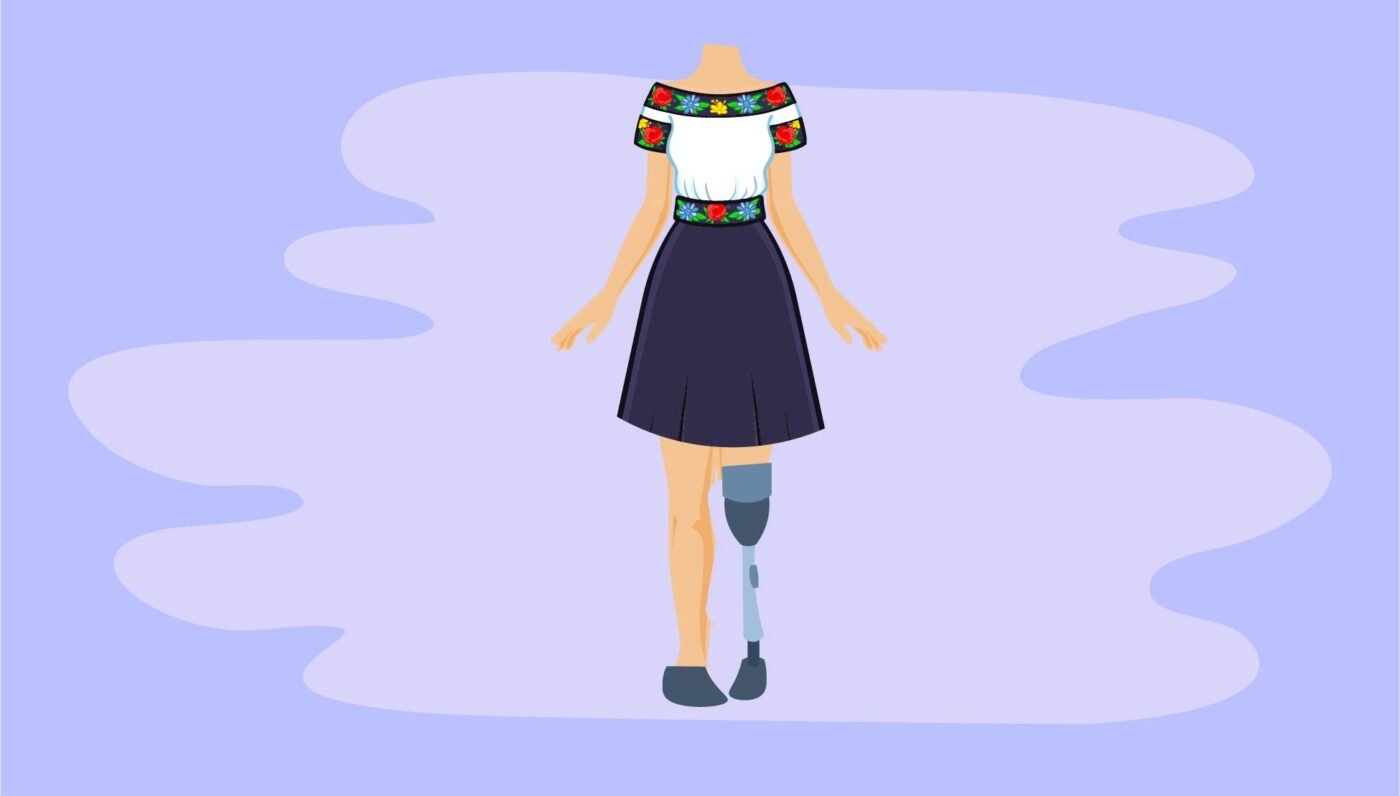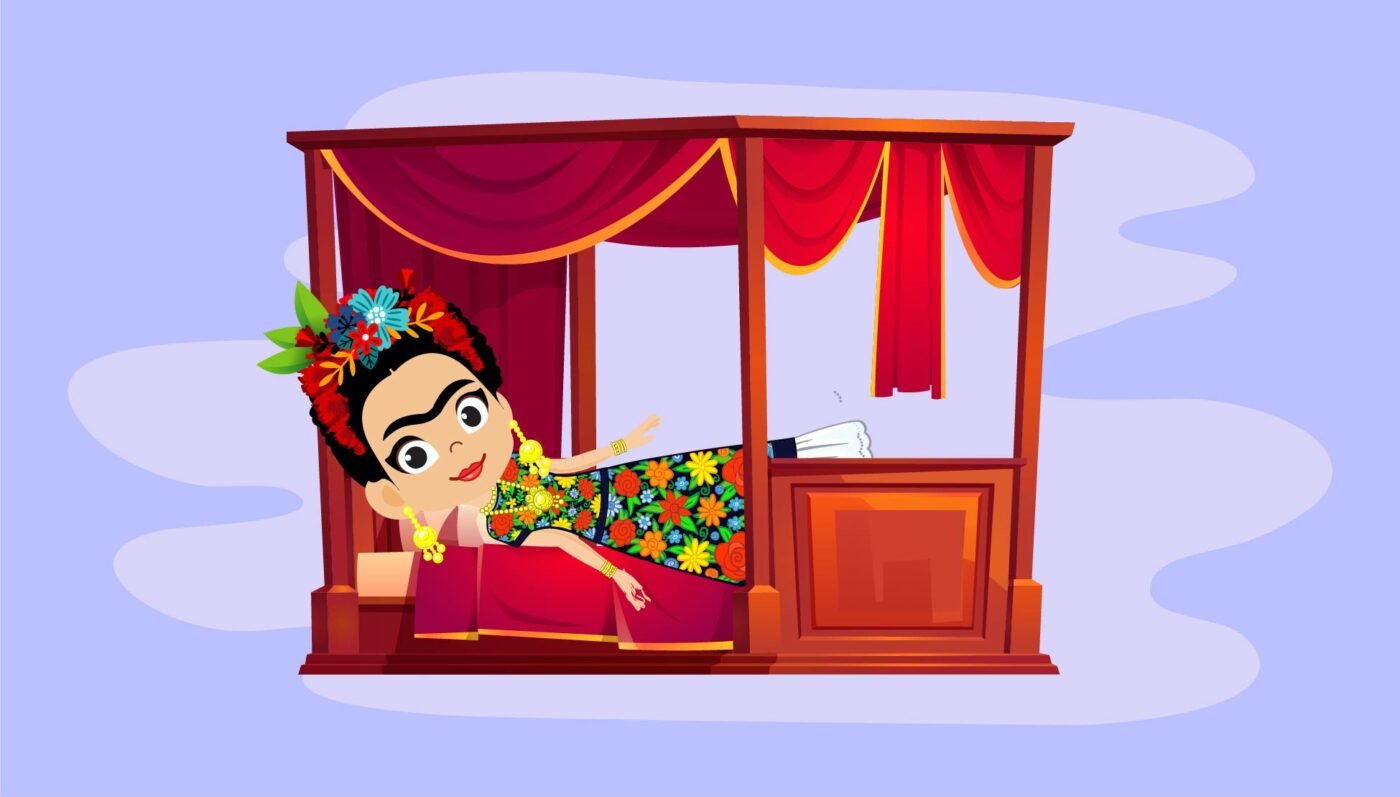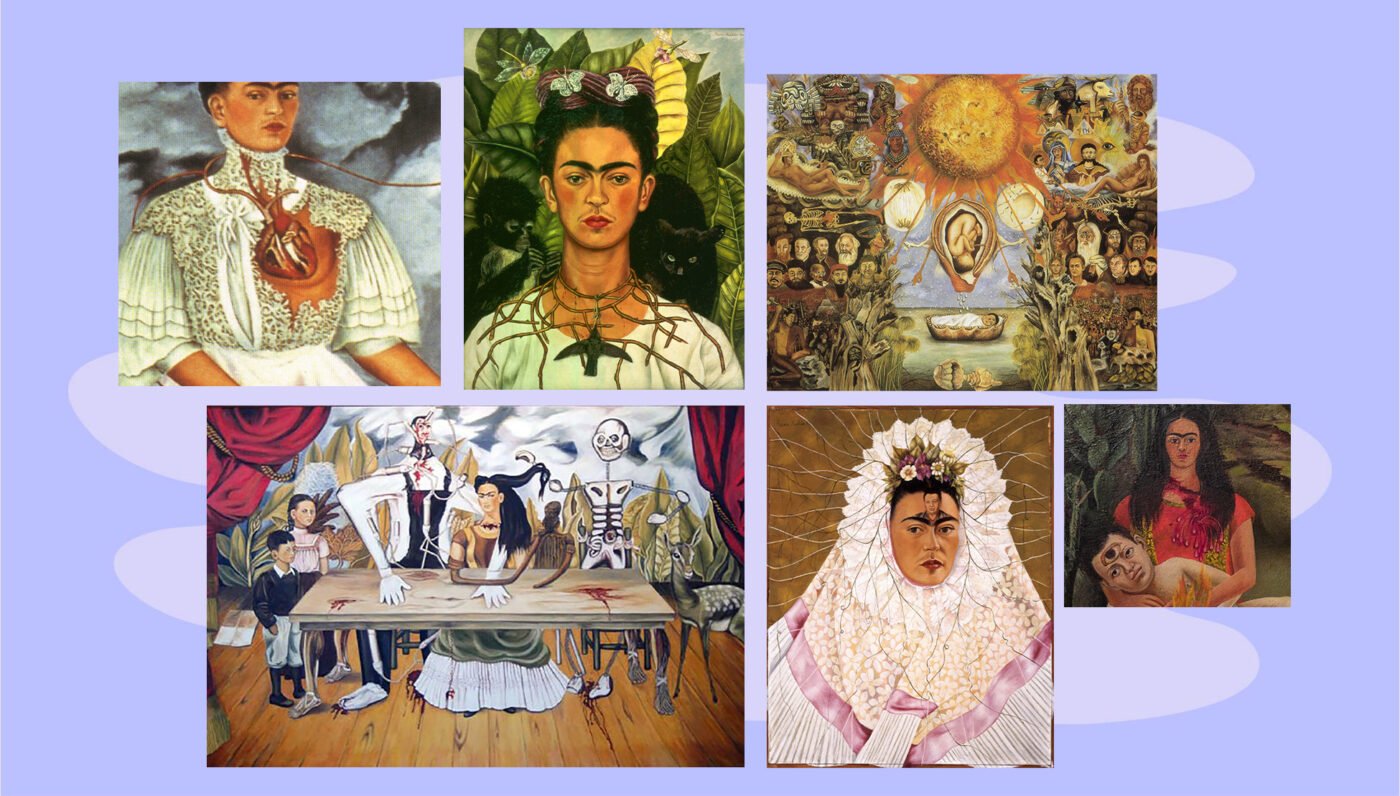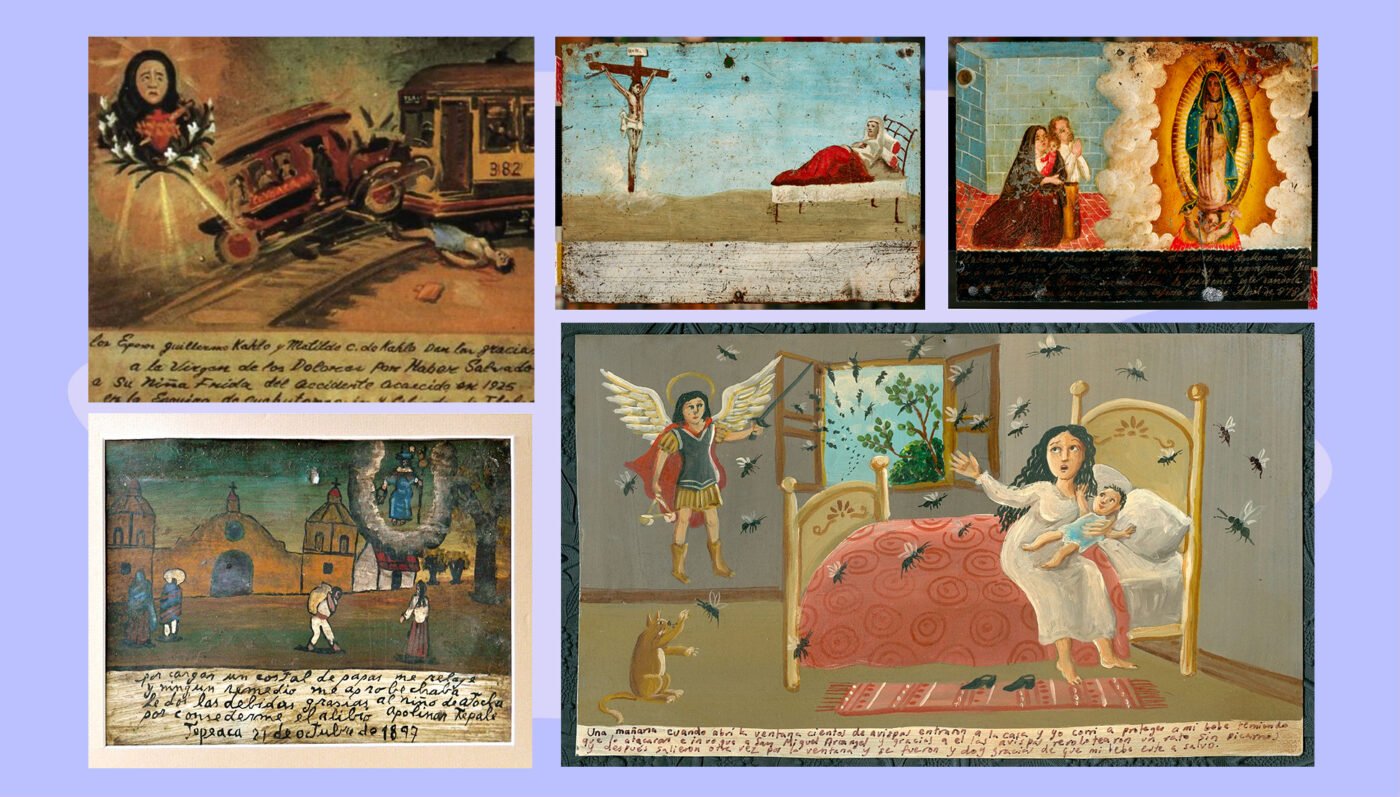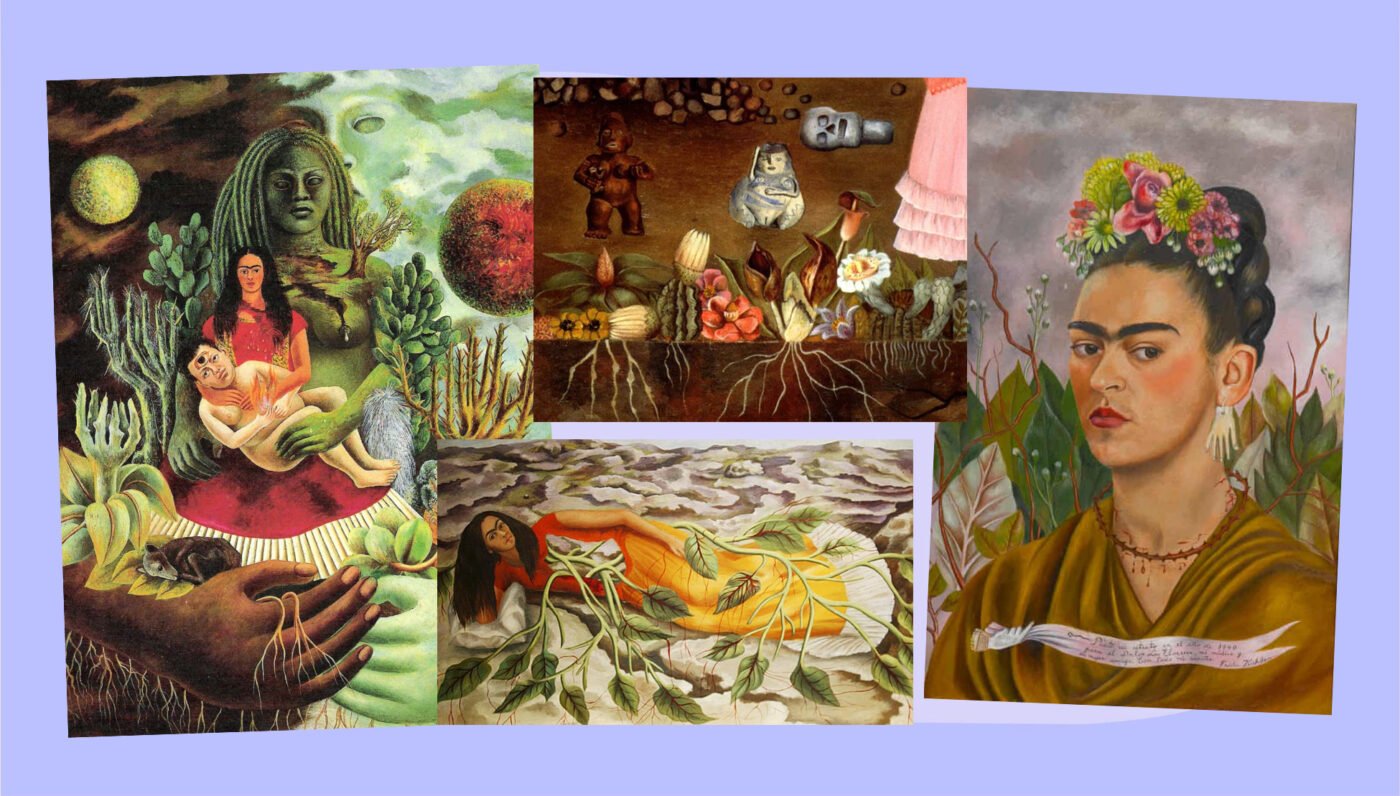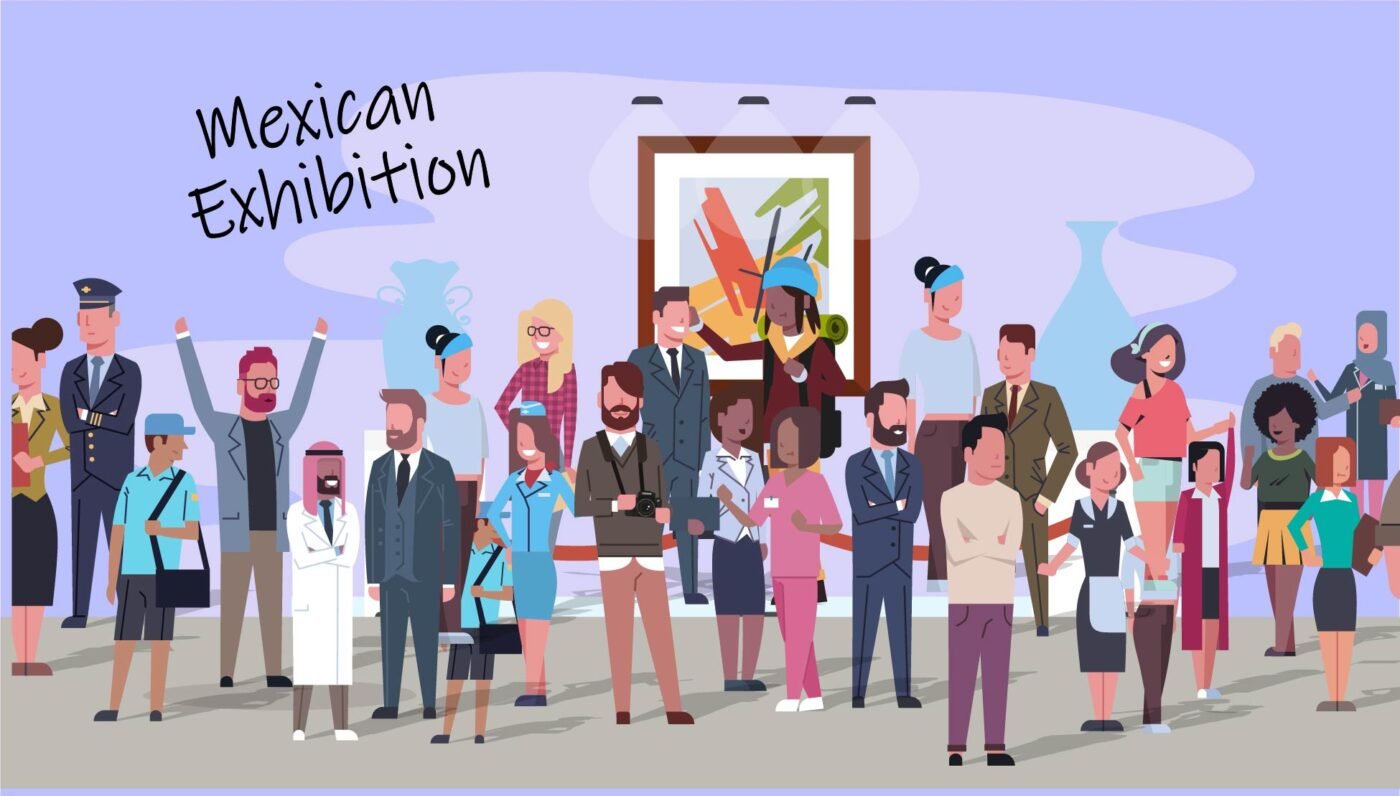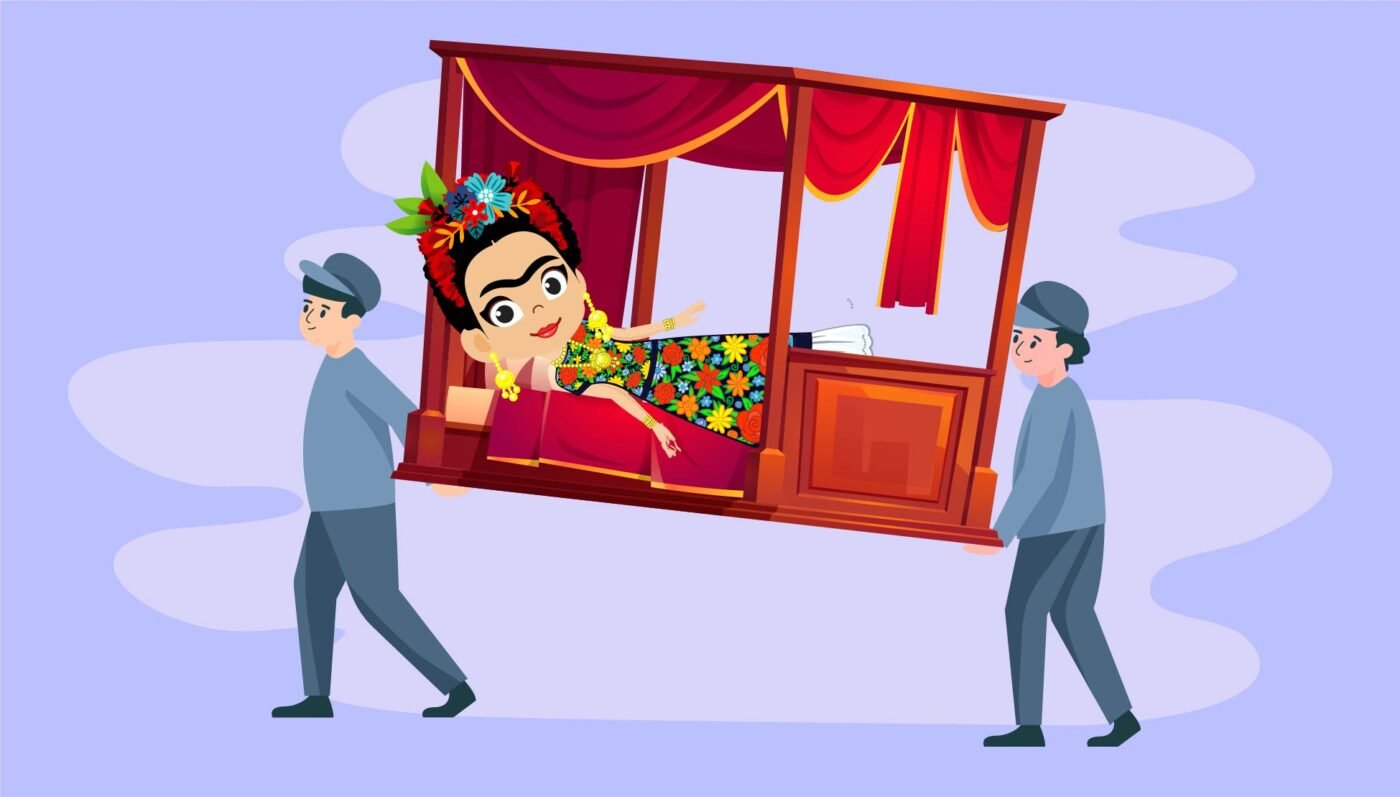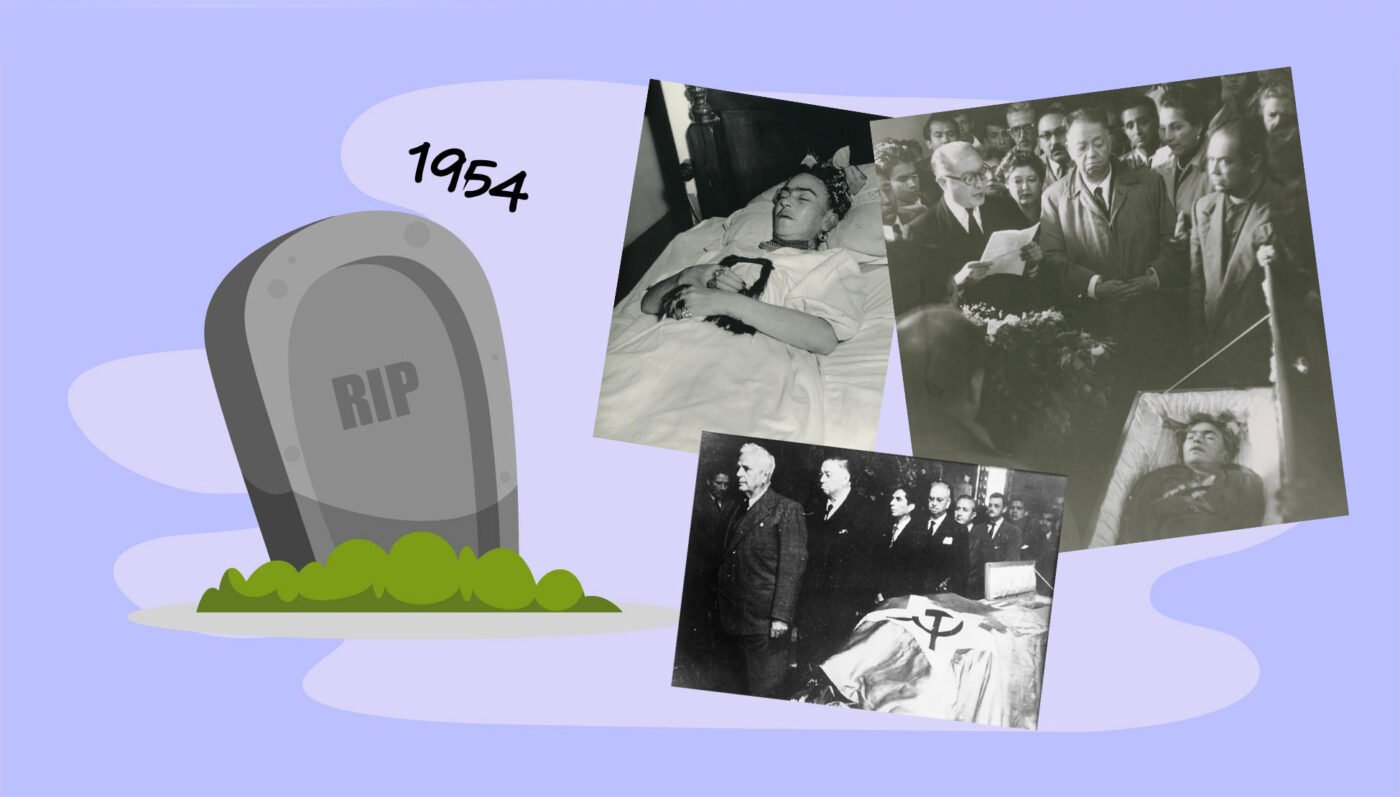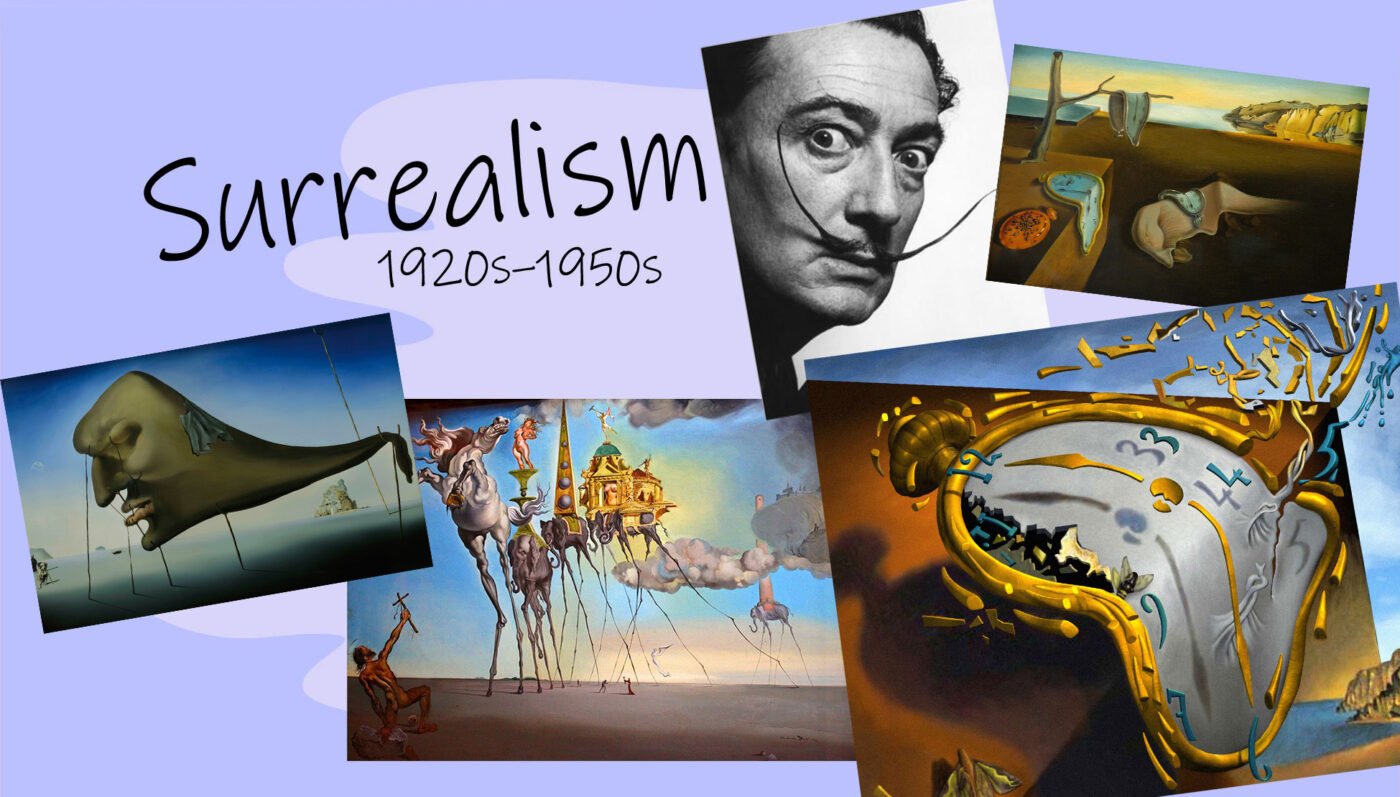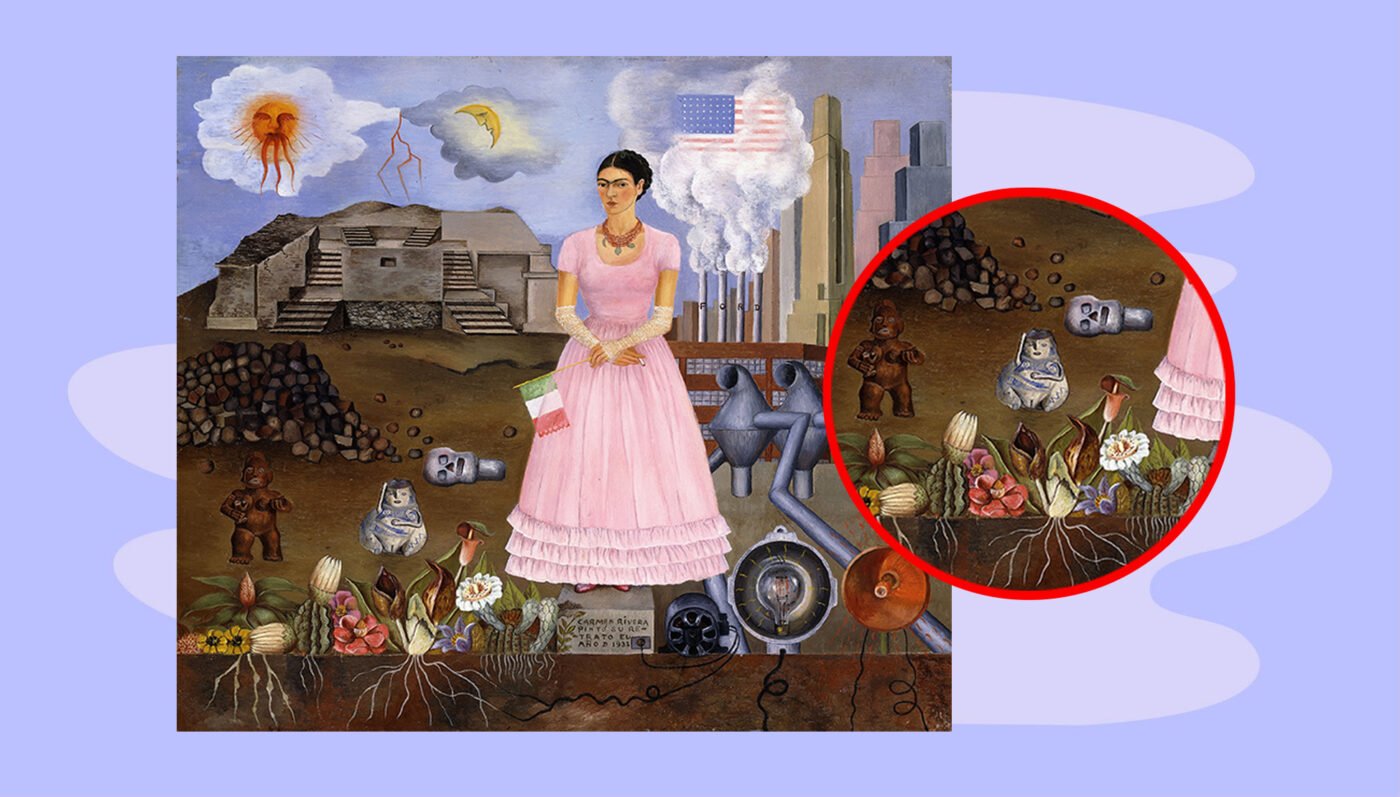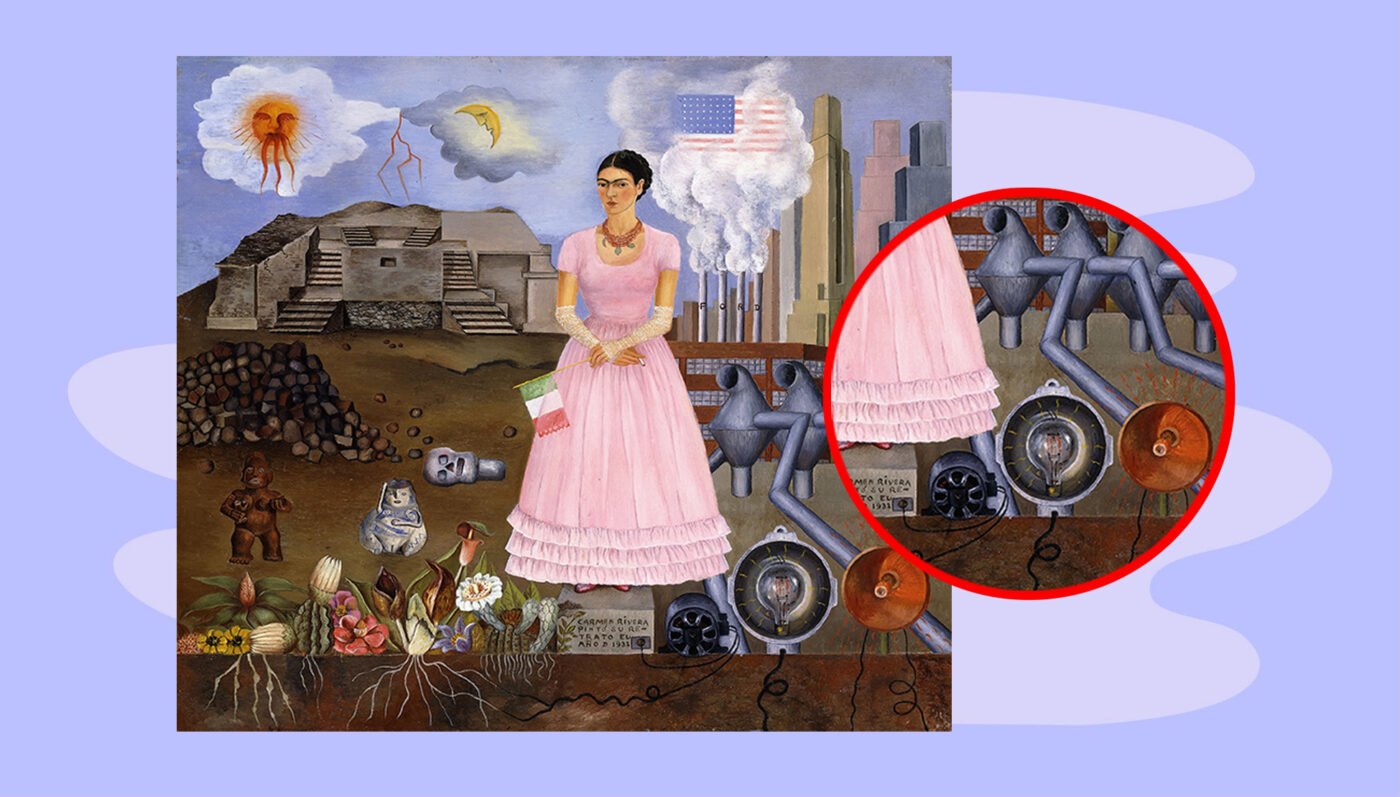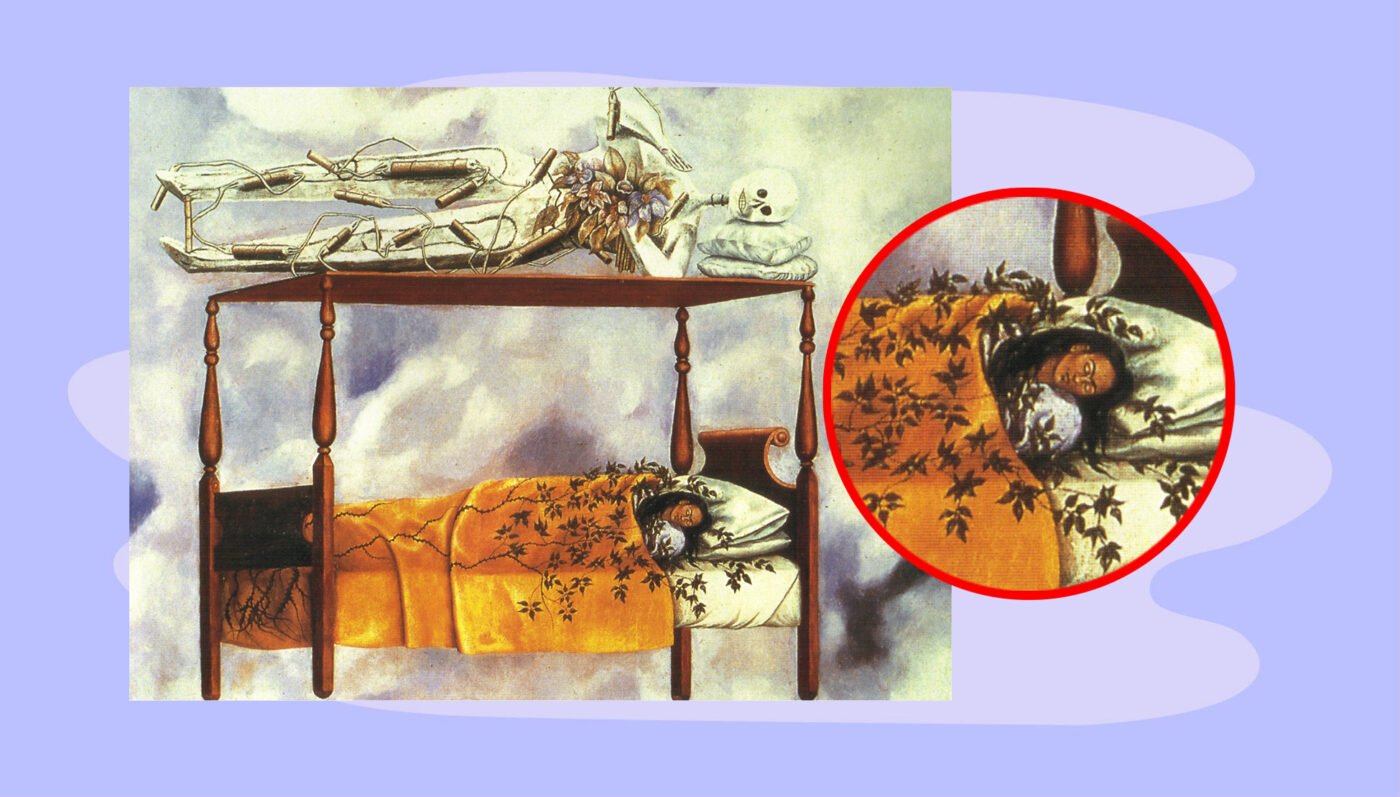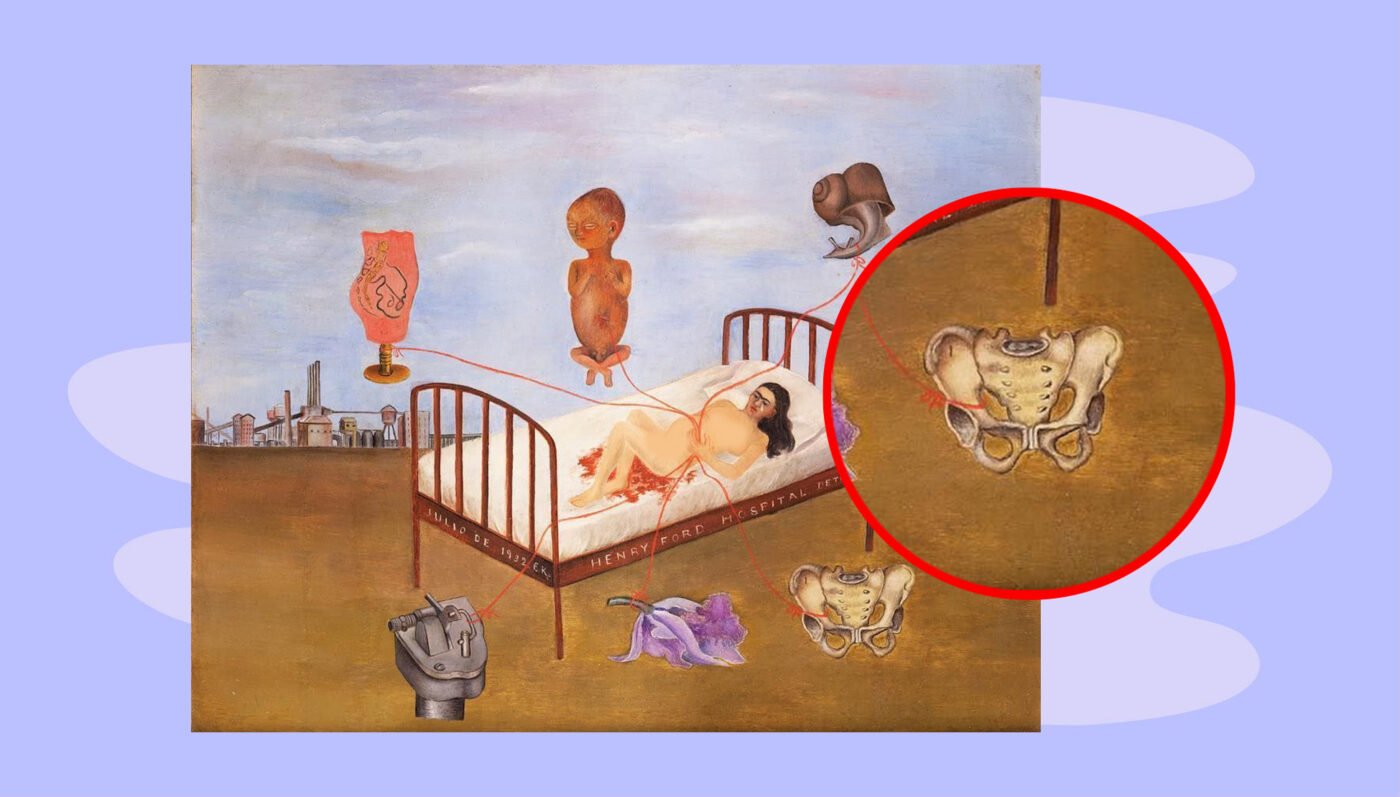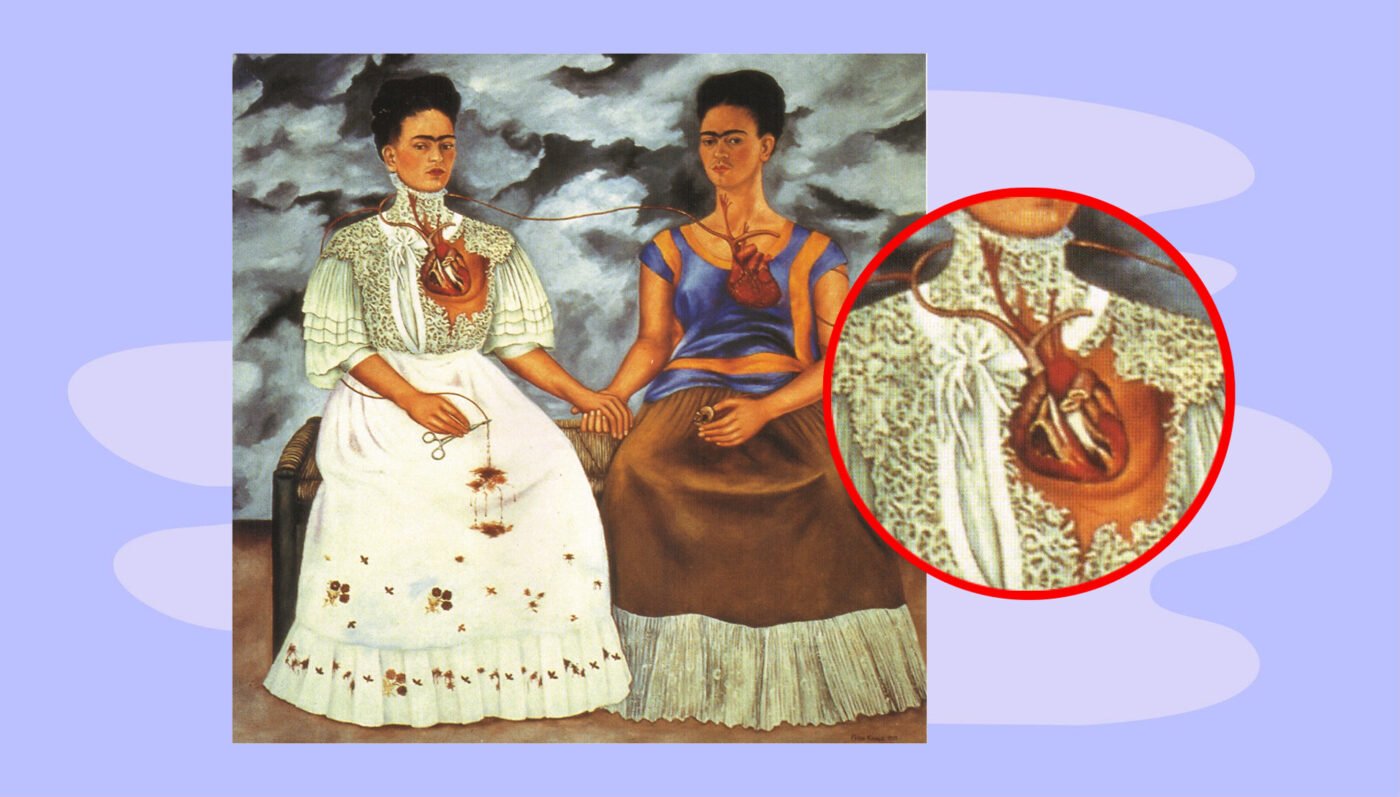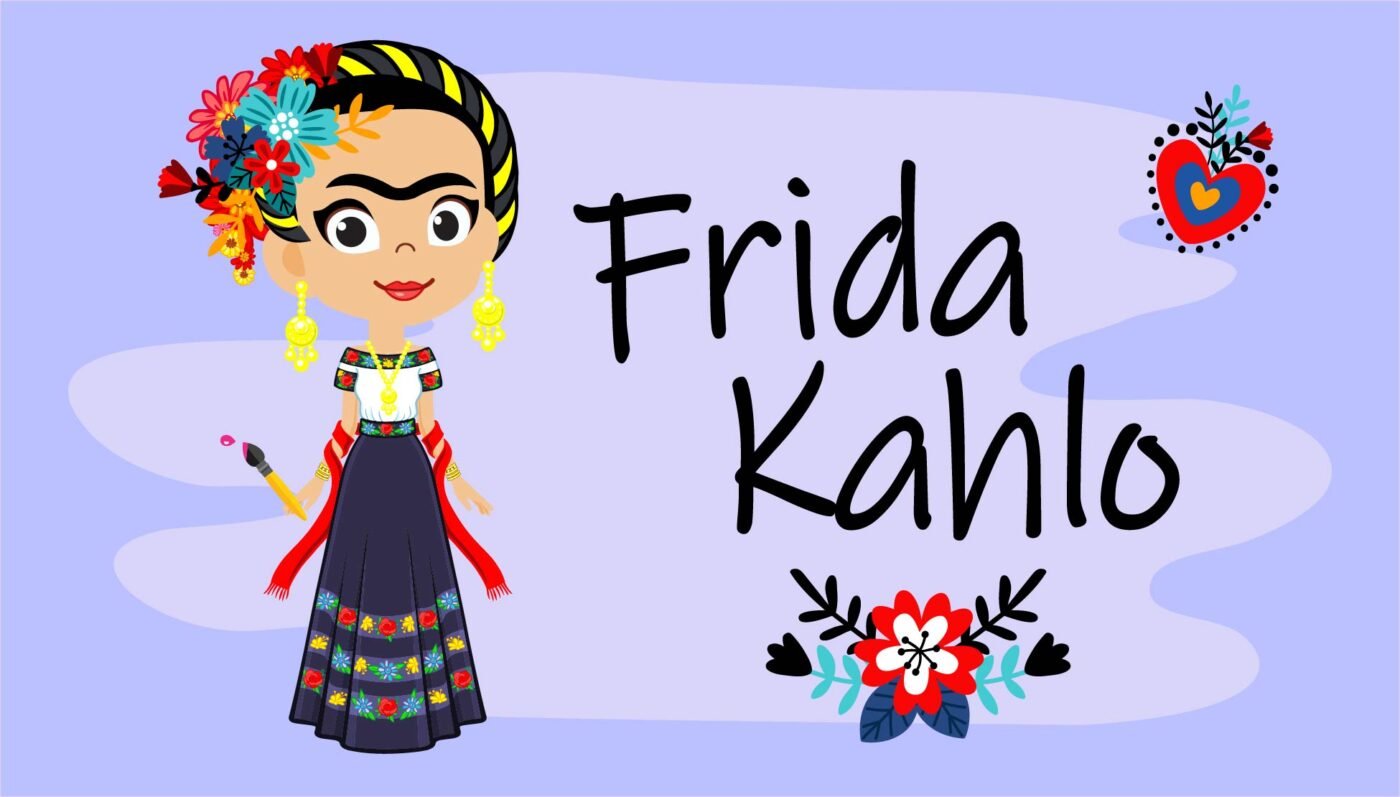Art History
Who was the astounding artist Frida Kahlo?
Frida Kahlo – 1907 – 1954
Many of you have seen the image of Frida Kahlo, printed on pillows, shoes, earrings, cell phone covers, and mugs. But do you know the story behind this remarkable woman? Who is this woman rocking the unibrow and flower crown?
WATCH OUR VIDEO ON Frida Kahlo here.
A master of self-portraits
She is an incredible artist that showed us her inner world with her super personal paintings. Frida made between 150 and 200 paintings in her life out of which 55 are self-portraits. She is known as the master of Self-Portraits.
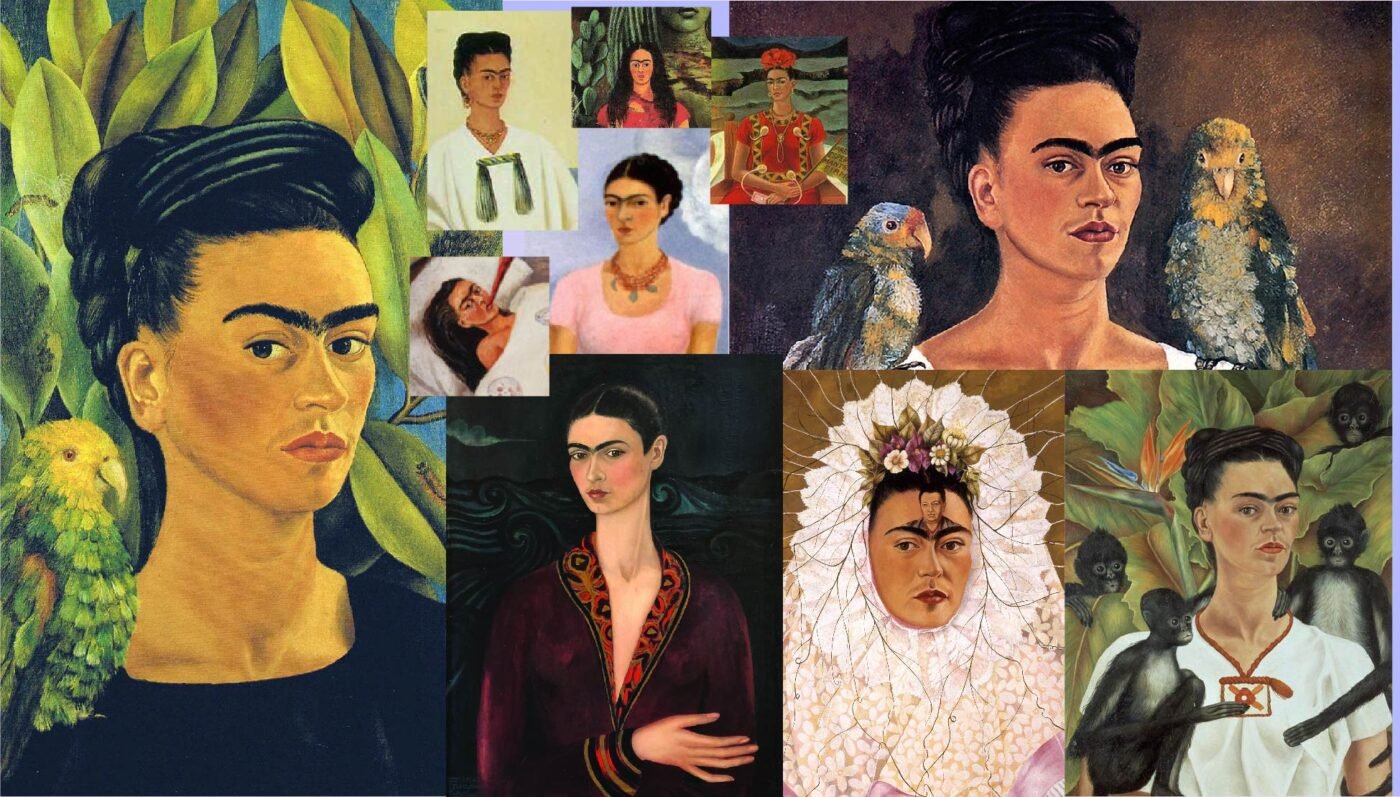
If you think about it she is the original Queen of Selfies, making a statement with her intense stare and beautiful Mexican style. In an age of liposuction, face-lifts, and hair removal, there’s something refreshing and liberating in coming to know a woman who flaunts the “defects” most women try to cover up.
Below the surface of her “take me as I am” attitude, however, lurked larger issues.
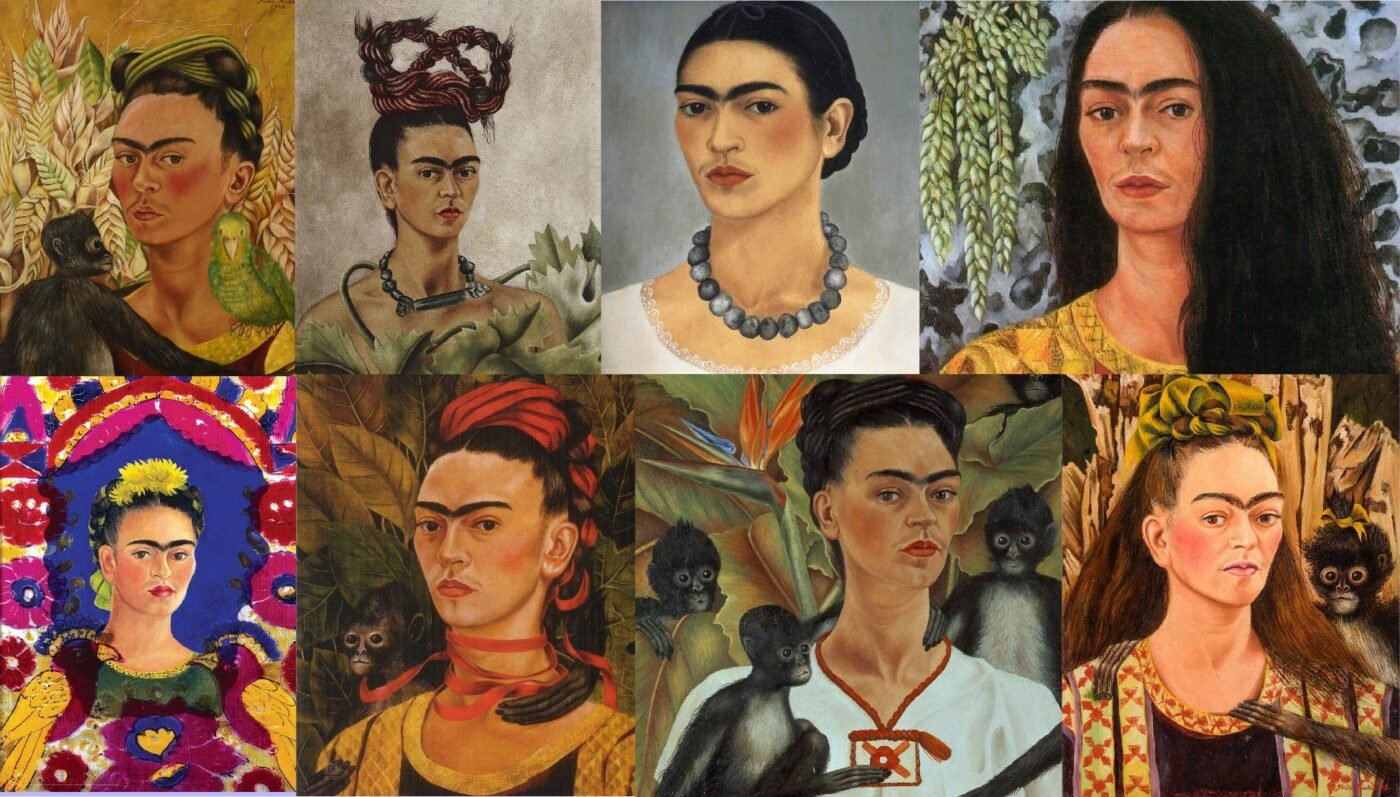
Frida had a life filled with emotional and physical pain yet she became an influential artist. She has overcome her challenges and suffering using her art as healing.
Documenting her struggles in her paintings, leaving us with an autobiography in paint. She used her suffering to create astonishing original art. She has become a symbol of dignity out of adversity.
Here is the story of the amazing Frida Kahlo!
Born from a mixed cultural background
Little Frida was born in Mexico to a German father and Mexican mother. Her father was a photographer. As a little girl, she would often help her dad in the darkroom developing photographs.
Back then photographs were mainly black and white. People had to add colour by meticulously painting it. Later Frida would assist in helping her father retouching and colouring the photos.
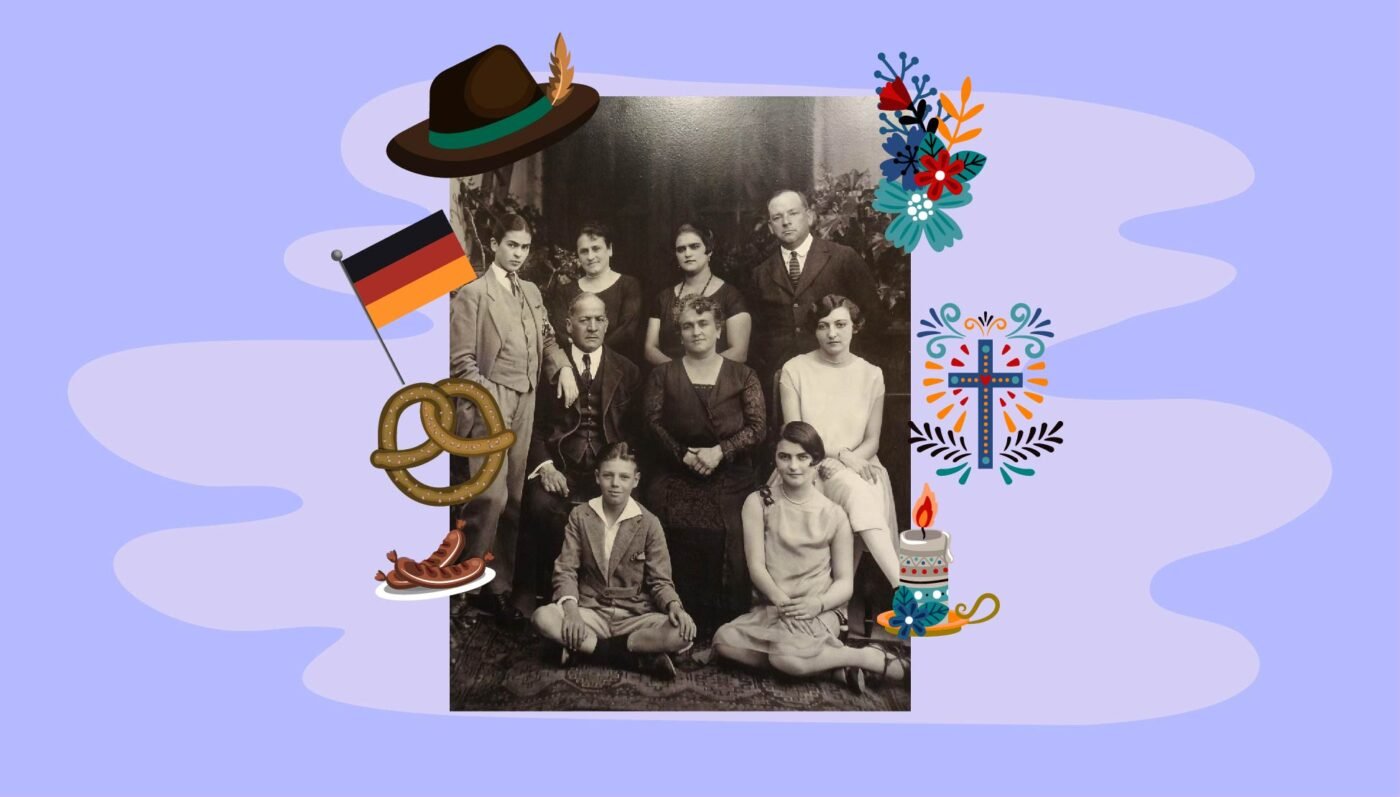
Polio as a child
At the age of six, Frida contracted polio which left one of her legs much thinner and shorter than the other. Since her legs were disproportionate she walked with a limp.
At school, she was mocked and called pig-legged-Frida. The mockery motivated Frida to become a Pediatrician. She wanted to specialize in helping other sick children overcome their diseases.

Challenging gender norms in society
From a young age, Frida decided who she wanted to be and redesigned herself. Kahlo was not fearful of going against the grain — in fact, she seems to have cherished it.
She adored reading and had a love for science. Back then a girl wanting to become a doctor was unheard of. Frida was one of only 35 girls in a Preparatory school filled with 1965 boys. She was determined to stand out and assert her own individuality.
For one family photo, Frida showed up wearing a man’s 3-piece suit, establishing her independence as a woman. For a girl to wear men’s clothing during that time was very odd. But Frida didn’t mind. She wanted to prove that girls could become anything they set their minds to.
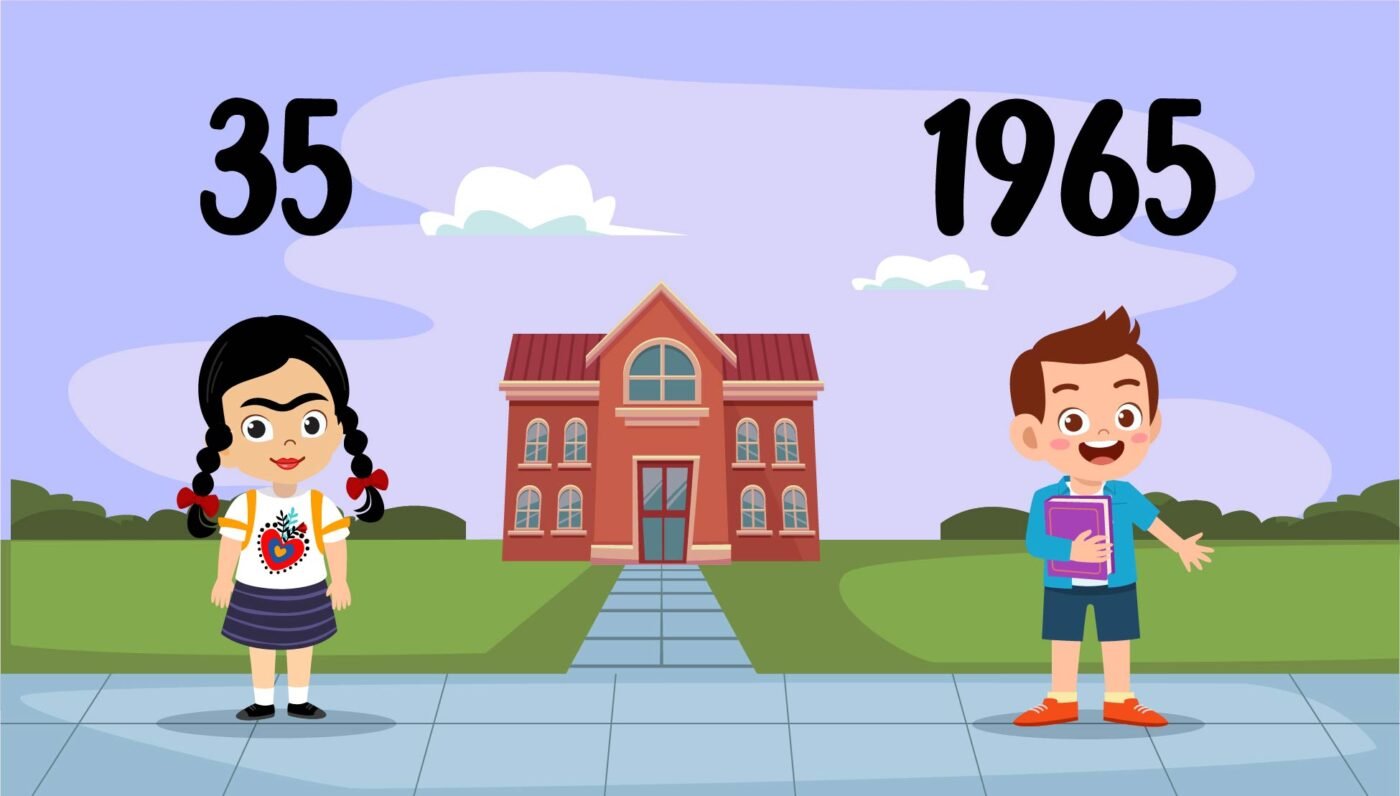
A near-fatal accident
When Frida was attending Medical School she suffered a near fatal accident. She was on her way back from class laughing with her friends.
They were driving on a streetcar trolley when a bus collided with them. Frida’s body was badly injured. She broke her collarbone, ribs, and leg in several places, her one foot was crushed, her shoulder dislocated, her pelvis broken and the most painful of all her spine was broken in 3 places.
On top of all that a handrail impaled her abdomen sticking out of her on the one side.

In the Street Car Trolley, an artist was traveling with her. He was on his way to restore a piece of Catholic Art and was carrying 14-carat gold leaf with him to touch up the painting. At the moment of the crash, Frida was covered in blood and showered in gold dust.
Frida had months of being bed-bound in hospital and at home to recover. She had to wear casts to support her back and help her bones heal. She had to be stretched with painful contraptions to help her spine heal. She was told she will never be able to walk again.
Becoming an artist
Her father bought her art supplies and encouraged her to keep herself busy with art. He built her an easel for the bed so she could paint while laying down. Frida had a 4 post bed, so her parents also installed a mirror at the top of the bed so she could be her own model.

I paint myself because I am the topic I know best.
Frida Kahlo
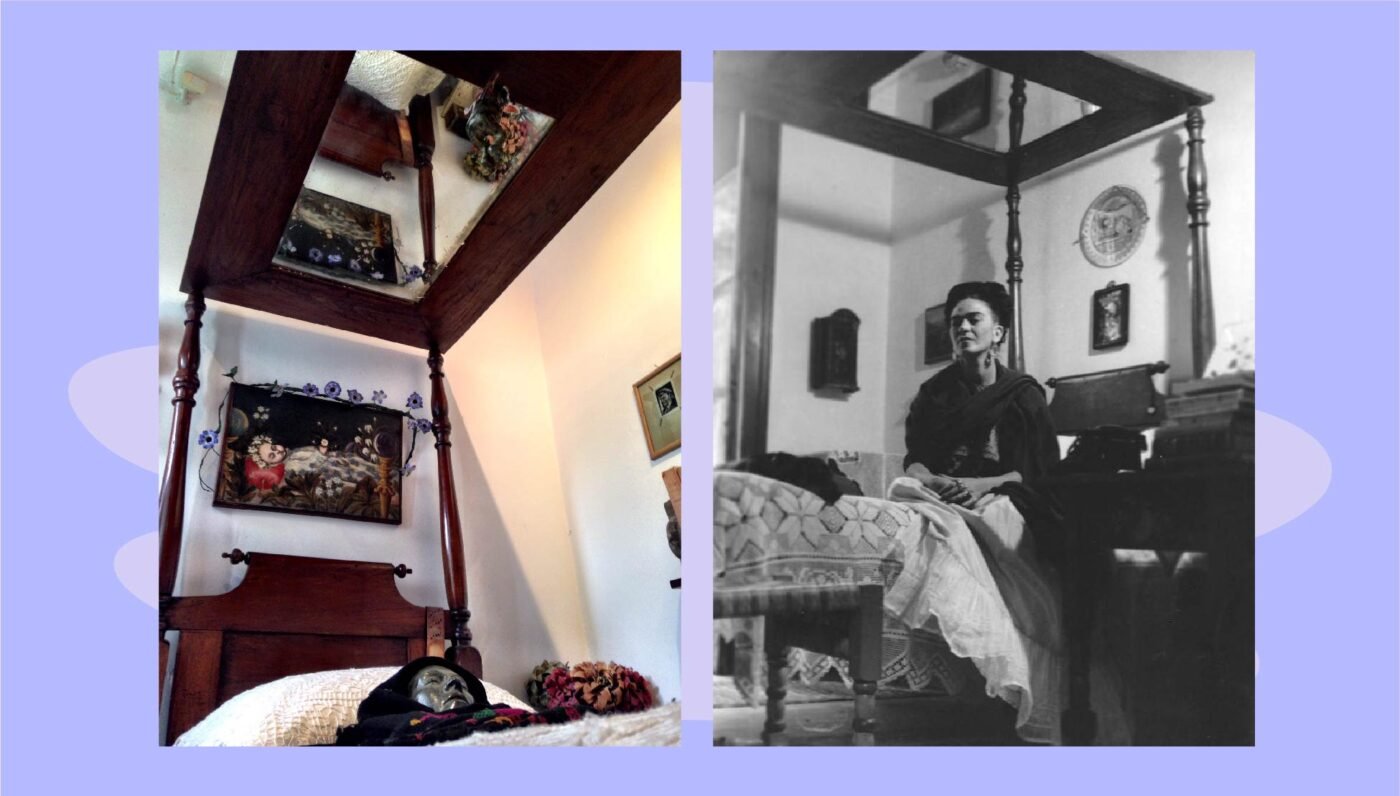
Frida’s paintings are mostly small so that she could paint them in bed while lying down. Because she was confined to bed and couldn’t go outside, everything she painted was from her memory.
Her paintings have an extreme level of honesty, in her self-portraits, she paints her slight mustache and her bushy eyebrows as is. Normally people would omit such details for the sake of aesthetics.
Frida’s dream to become a doctor was shattered. Her family had to mortgage their house to pay for all Frida’s operations and medical assistance.
Eventually, Frida was in a wheelchair but she was determined to walk again. She wanted to surprise her father and show him that she was going to be alright and heal.
My family and my art helped to heal me.
FRIDA KAHLO
One day when her father came home and rushed to hug her, she stopped him. She said wait and slowly Frida got up from her wheelchair and walked toward him.
Dressed for success
Frida wanted no pity from people, she wanted to be her own person filled with life and passion and not let the accident drag her down. She decided to cover her defective legs by wearing long traditional Mexican skirts.
Her body cast was also neatly hidden under the Mexican square shirts. With her elaborate plaids and flower crowns she deliberately drew people’s attention away from her body to her face. She adorned her face with beautiful large jewelry.
When people met Frida they would always look up at her face and not notice her broken body. She also had special shoes made for her to hide her shorter leg and limp.
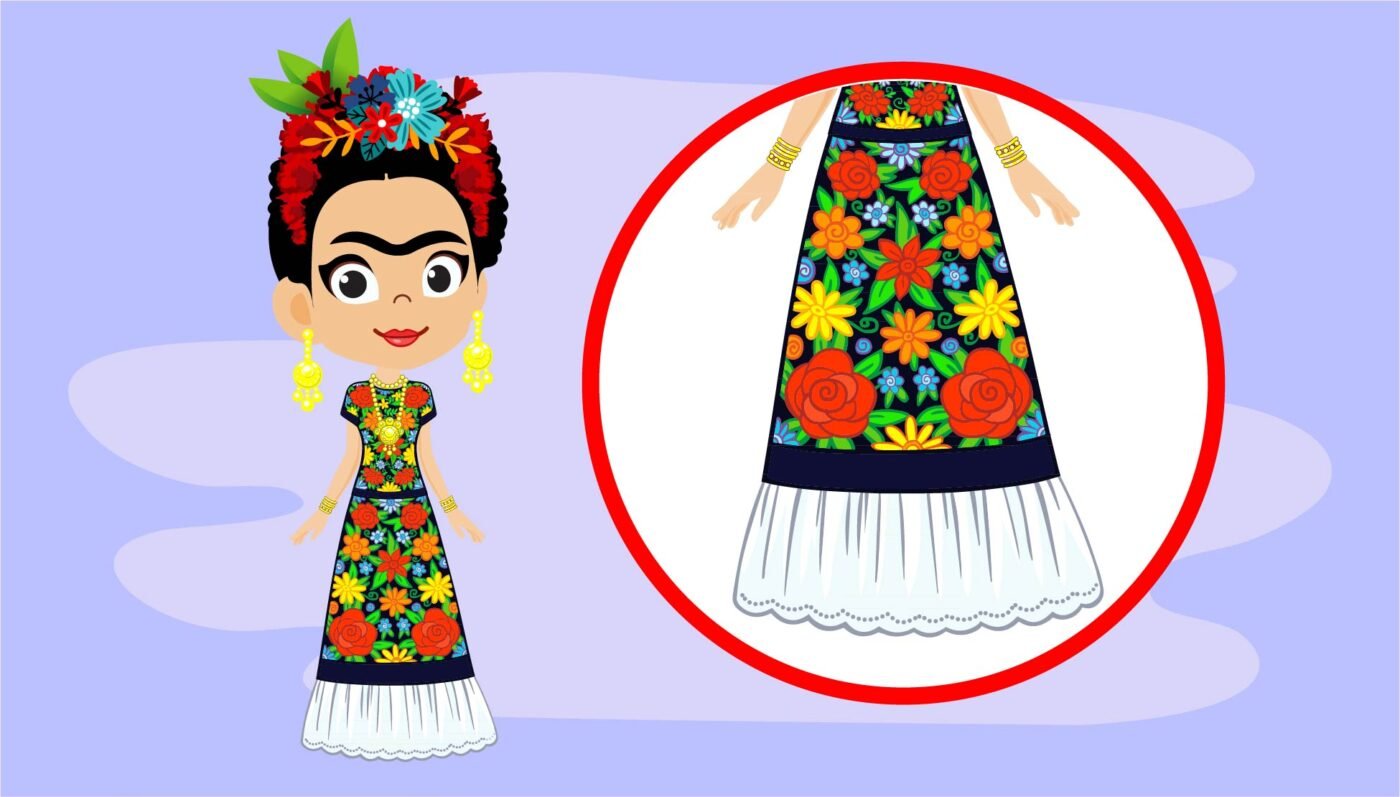
The most important part of the body is the brain. Of my face, I like the eyebrows and eye.
FRIDA KAHLO
Frida loved dressing up and wearing traditional Mexican clothes to show off her national pride. At the time no one dressed like this. The fashion was more French and American Hollywood. Frida wanted Mexicans to be proud of their heritage and stop copying foreign fashions and trends.
A Revolutionary
At the time Frida became a communist. Communism is an idea that people could share in the wealth of a county by forbidding people from owning anything, having the state own everything, and having the state allocate a share to everyone.
Capitalism is when everybody works hard for their own wealth and money. Frida became a member of the Communist Party. She even changed her birth date from 1907 to 1910. Not because she wanted to be younger, but because she wanted to be a part of the Mexican Revolution. You see the Revolution started in 1910.

Meeting Diego
Frida always knew about the famous Mexican Mural Painter Diego Rivera. She always respected his art. Once when she was still at school she played a prank on Diego by covering his ladder in soap so he would slip while painting a mural.
Now instead of teasing him, Frida sought him out for art advice. She wanted to know if she was any good. She wanted to start selling her paintings to help support her family and cover some of the medical bills. Diego was really impressed by Frida’s skills and he encouraged her to never stop painting.
Whatever you don’t ever stop painting
Diego Rivera
However, Diego and Frida fell in love. Within a year Diego and Frida were married.
Frida’s parents didn’t approve of Diego at all. They even had a name for the couple calling them the Elephant and the Dove. She was 22 and he was 42.
He has been married before, twice, and both of the marriages ended in divorce because Diego was unfaithful. However, the beauty needed the beast. Diego was already a very successful artist and offered to buy Frida’s parents’ house and pay off all her medical expenses.
Their marriage would be one of the most passionate yet tumultuous and probably one of the most famous marriages in the art world. Two great Mexican Artists married each other. Frida wrote,
There were two major accidents in my life, one was when a train hit a bus and the other was meeting Diego. Diego was by far the worst
FRIDA KAHLO
Their passion and devotion for each other were matched with jealousy and anger. Diego promised to be loyal to Frida but he couldn’t keep his promise. This broke Frida’s heart and eventually drove her to her own affairs.
Marriage bliss and the USA
At the beginning of the marriage, Frida was happy to just be Diego’s wife and support his art career. She travelled with him around the USA (1930 San Francisco. Detroit. New York ) as Diego painted large murals.

Frida didn’t like America. She was opposed to Capitalism and in the painting Self Portrait Along the Border Line Between Mexico and the United States, 1932 we see the stark contrast between Frida’s homeland and the USA.
On the right-hand side we are industrious America with Capitalism in full swing – note the tiny letters spelling FORD on the factory.
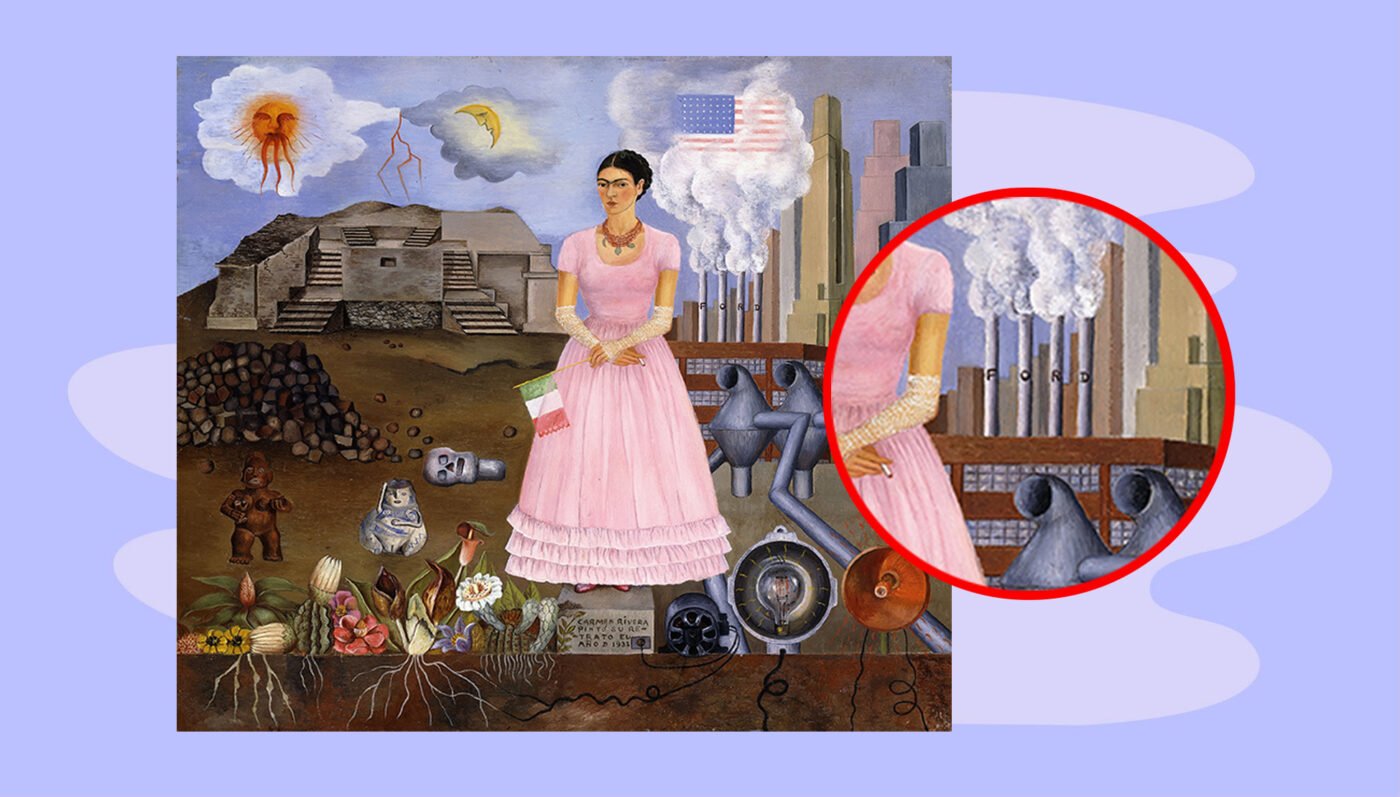
On the left, we see the Aztec ruins of Mexico, statues, and indigenous plants.
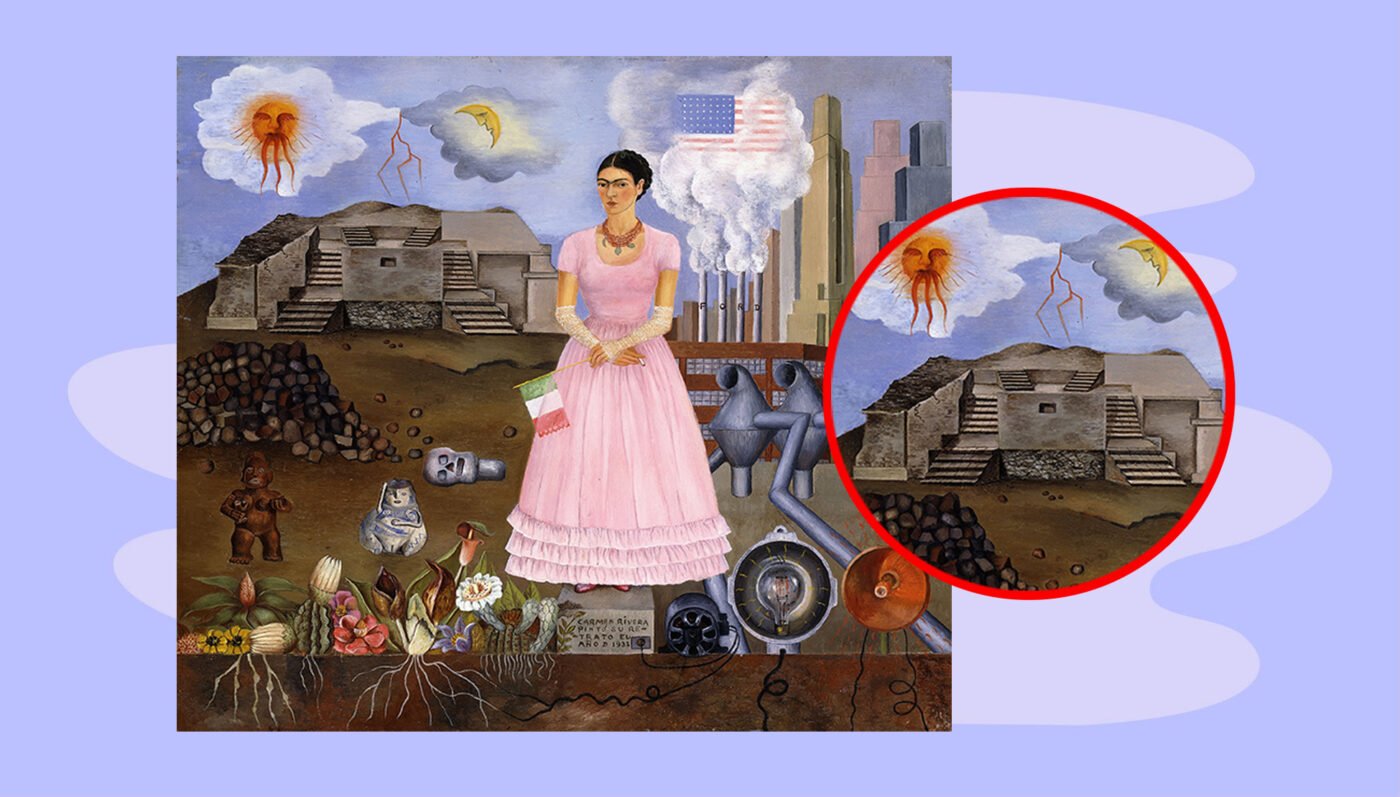
Where America has machines Mexico has life. Frida is wearing an uncharacteristic pink frock with lace gloves. She stands frozen like a statue on a stone marked “Carmen Riviera” her Christian Name and Married surname. She is pretending to be submissive and proper but she holds a small Mexican flag to show us where her loyalties lie.
An empty womb
A great sadness within their marriage was Frida not being able to have a child. The accidents damaged her body too much and she was told she will never be able to have a baby.
However Frida fell pregnant and she was so overjoyed, but then she lost the baby. She became pregnant again and again and kept on losing the babies. Her body was too broken to carry a baby to full term.
Frida sank into a deep depression. She struggled to deal with the loss. She felt her body was dysfunctional since she cannot give life. In the painting called Henry Ford Hospital, we see Frida’s twisted body with red ribbons bound to her hospital bed.

One is tied to the baby she lost, the other the snail, to show how slow the entire procedure felt, in the bottom right-hand corner is her broken pelvis the cause of the miscarriage, there is also an orchid Diego gave her as a gift in the hospital, but then he left to go back to work abandoning Frida.
Painting completed my life. I lost children and a series of other things that would have fulfilled my horrible life. My painting took the place of all of this
FRIDA KAHLO
Casa Azul
When Frida’s father died, Diego and Frida moved into her parent’s house. The house she grew up in. They decided to change the house completely.
Frida loved children and she wanted them to feel welcome. They painted their house a strong cobalt blue with red accents to attract all the kids in the neighborhood. They called it Casa Azul – the Blue House She left the courtyard door open and kids were always welcome to run in and visit her. They were even welcome to pop into her bedroom and watch her paint. They also filled the gardens with animals, such as parrots, monkeys, and dogs. Frida’s house and the immediate environment were also important to her because of her restricted movement.

Living with pain
Frida had various operations to try and improve her health. She often had to wear back braces to try and keep her spine straight. She would decorate her plaster of Paris, sometimes with flowers. In this brace, you can see the communist star and sickle on her heart and a baby she lost in her womb. Frida embraced her back braces wearing them as a corset and second skin. Making them a part of her wardrobe.

A broken heart
Frida knew Diego was unfaithful but she chose to turn a blind eye. However when Diego cheated on her with her own younger sister Christina – Frida could not forgive him. She was outraged and decided to get revenge on Diego for all his unfaithfulness.
In 1937 Mexico offered asylum to Leon Trotsky, the Russian Revolutionist. He was a famous communist hero and Diego and Frida offered that Trotsky and his wife could stay in their house Casa Azul. To get back at Diego for her sister Frida started an affair with Leon Trotsky. Eventually, Trotsky’s wife confronted him and they moved out.
In 1938 Frida and Diego divorced. Another reason for the divorce was Frida’s success. It is rumored Diego was jealous of his wife’s art getting all the attention. At this time Frida was starting to make a name for herself as an artist in America. In 1938 she had her first exhibition in New York. She wrote in a letter
This way I will be free. I can do what I want without asking Diego for money. I will never accept money from any man again until the day I die.
So in 1939 Diego and Frida got divorced. This is when Frida painted the iconic Painting known as The Two Fridas. She was completely heartbroken. This is one of the largest paintings Frida ever painted. It is almost life-size.

On the left we see Frida in a Victorian, stiff, lace shirt. . On the right Frida with her traditional Mexican clothes holds a small portrait of Diego. The painting visualizes Frida’s broken heart stating that Diego literally ripped her heart out and she is in danger of bleeding to death.
The stormy sky filled with agitated clouds may reflect Frida’s inner turmoil.

She also painted her Frida with cropped hair. where she cuts her hair off wearing Diego’s suit. Diego loved Frida’s hair, flowers, and colourful bright Mexican dresses. In this painting, Frida is destroying the Frida Diego loved.

“I drank to drown my sorrows, but the damned things learned how to swim.”
FRIDA KAHLO
Frida was now free from Diego and could focus on her own personal art career. She organized an exhibition in Paris. Even though the Paris exhibition wasn’t as successful as the New York Exhibition Frida achieved something far greater. The Louvre Art Museum – the biggest, most prestigious art museum in the world bought a painting from Frida.
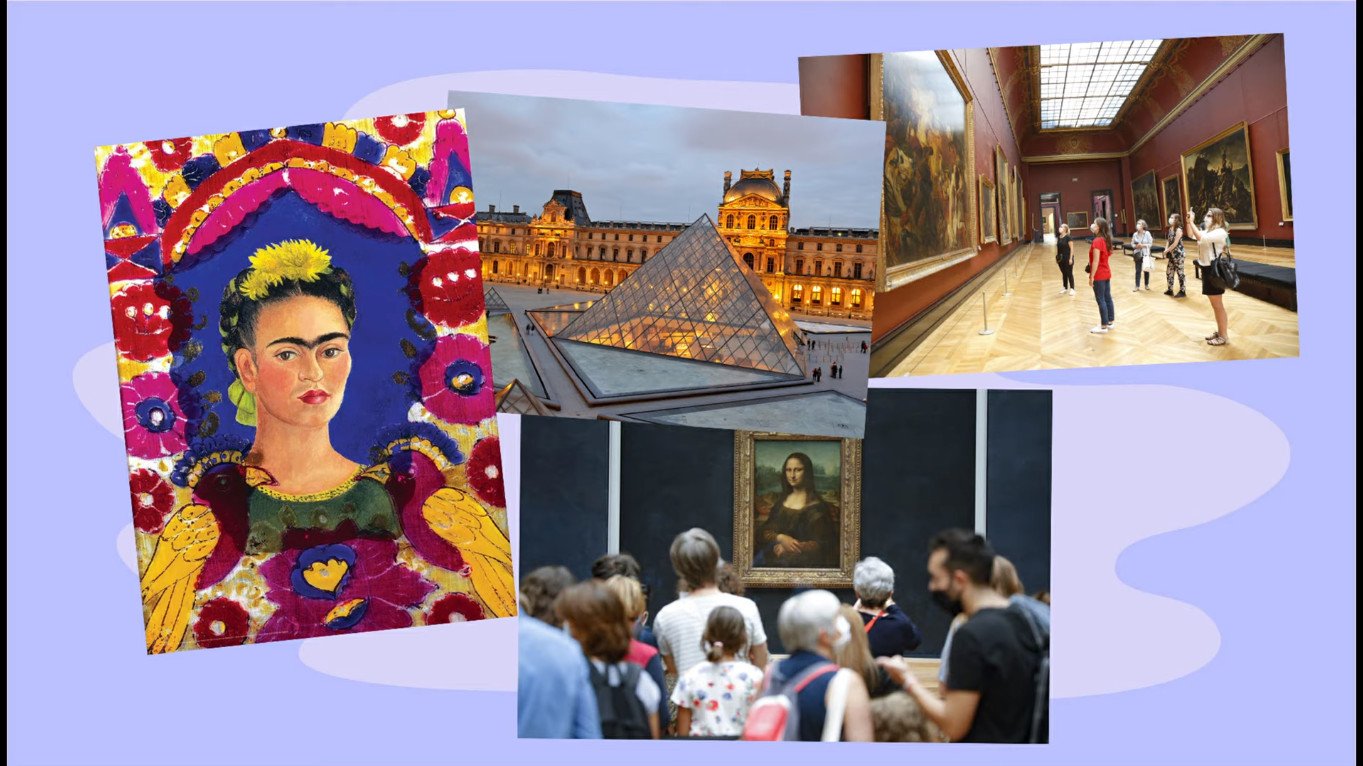
Declining health
Back in Mexico, in 1940 Frida had serious health problems. When in hospital Diego rushed to her and proposed to her again. She accepted.
You see together Diego and Frida shared the same passions, they were fellow artists and fellow revolutionaries. Diego also really wanted to care for Frida with her frail health.
Frida had several surgeries again but her condition did not improve. In 1953 her leg had to be amputated because of gangrene.
Legs.. why do I need you for if I have wings to fly
FRIDA KAHLO
Frida decorated her prosthetic leg so no one would notice.
Catholic Symbolism
Frida’s mother was a strong Catholic. Even though Frida rejected the faith we do see a lot of Catholic influences and symbols in her art. One of these is the thorn crown Jesus wore at the crucifixion. In Self-Portrait with Thorn Necklace and Hummingbird, 1940.
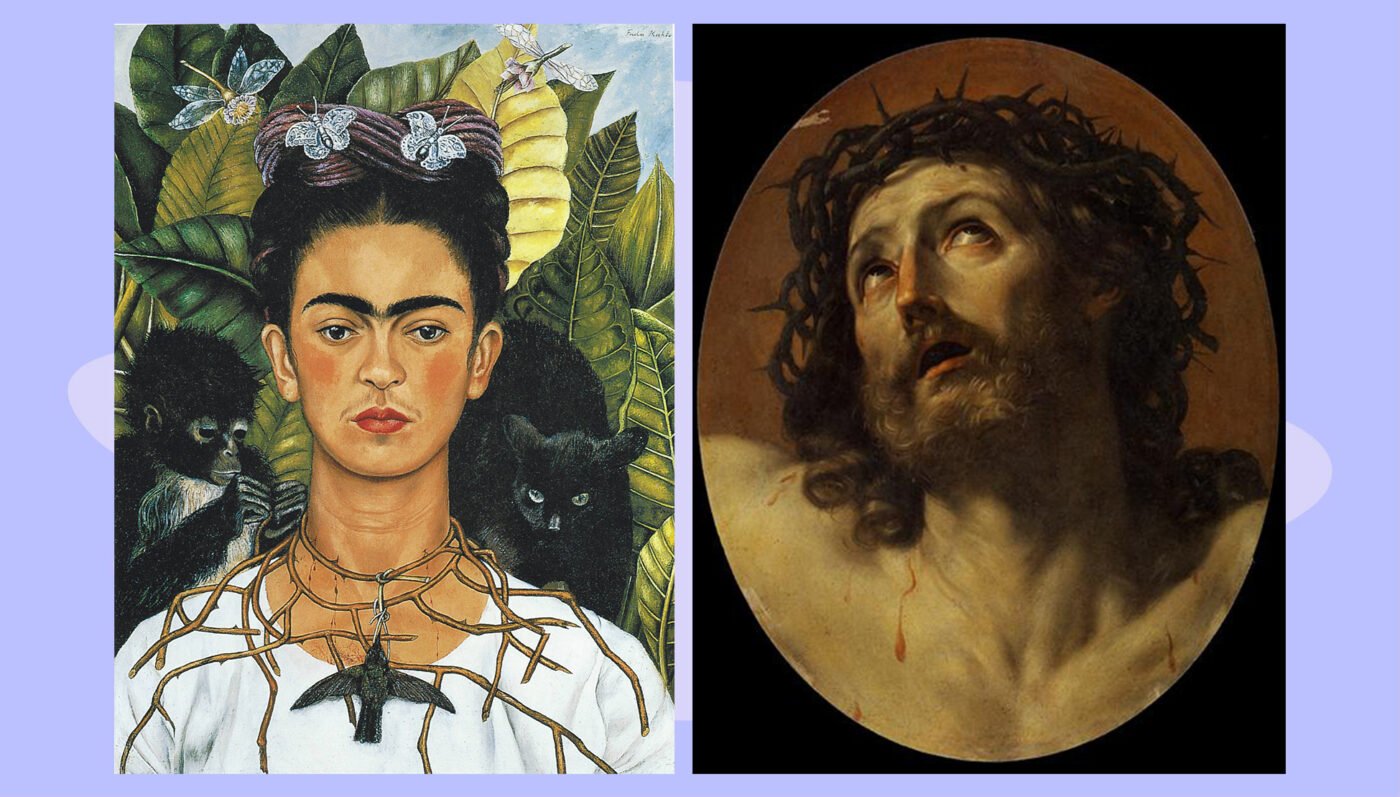
The monkey on the left was a gift from Diego and here we see the monkey tying a necklace of thorns around her neck that causes her to bleed. The hummingbird is a symbol of freedom and hope but here it is dead, hanging around Frida’s throat. There are some positive symbols in the painting including the butterflies in her hair symbolizing metamorphosis into a new life. Usually, the hummingbird symbolizes good luck in Mexican culture but this is contrasted with the black cat symbolizing bad luck. It is suggested that this painting symbolises the burden and suffering Frida must bear, her physical pain from the accident, and her emotional pain from Diego.
Ex-votos
Frida’s art is also influenced by little paintings on tin called Ex-votos. Ex-votos were painted by amateur artists as little gratitude prayers, thanking the Saints for answering prayers. Returning a lost pet or helping them survive an operation. The tiny paintings usually lack depth and are narrative in their nature. Frida had a collection of over 200 Ex-votos in her house that she liked. We can clearly see her styles draw from these.

Roots also play an important role in Frida’s art. This is her dream to give birth as a childless woman. The vine that grows from her abdomen ends in the blood instead of life. It depicts her frustration and loss with not being able to be a mother.

A Mexican Exhibition
Even though Frida was now enjoying international recognition – she was featured in Vogue Magazine in 1939 She wasn’t really taken with it. She wanted her own country to celebrate her. She didn’t see the reason for being internationally celebrated if her own people didn’t appreciate and celebrate her art. She really wanted her own solo exhibition in Mexico.
In 1953, when her first solo exhibition was finally organized her doctor informed her she couldn’t go. She was too sick and frail and had to stay in bed. He said to her “Promise me Frida you will not leave this bed!” and Frida promised.
Diego was asked to do the opening speech for the exhibition and Frida had to stay at home. But Frida being an organizer and not one to take life lying down made other plans. Frida called all the kids in the neighborhood that so often visited her in her home. They were now grown boys and she organized that they carry her and her bed out of her house to the exhibition.

Frida arrived at the exhibition in her bed! When the doctor who was also attending the opening looked at her in shock she simply said “Well doctor, I didn’t leave my bed!“
Nothing is worth more than laughter. It is strength to laugh and to abandon oneself, to be light. The tragedy is the most ridiculous thing
FRIDA KAHLO
Death is near
Frida’s health kept on declining, she was in lots of pain and taking lots of painkillers. Where her brush strokes were always very precise and delicate they became cruder and almost careless.
Frida could also feel death was near. Here we see death just on the other side of the bed. While Frida is sound asleep the skeleton is wide awake and watching. It also has dynamite strapped to it that can go off at any minute. In Mexican, Culture Death is something beautiful so it seems like the bed is slowly floating off into the sky. Her final diary entry was:
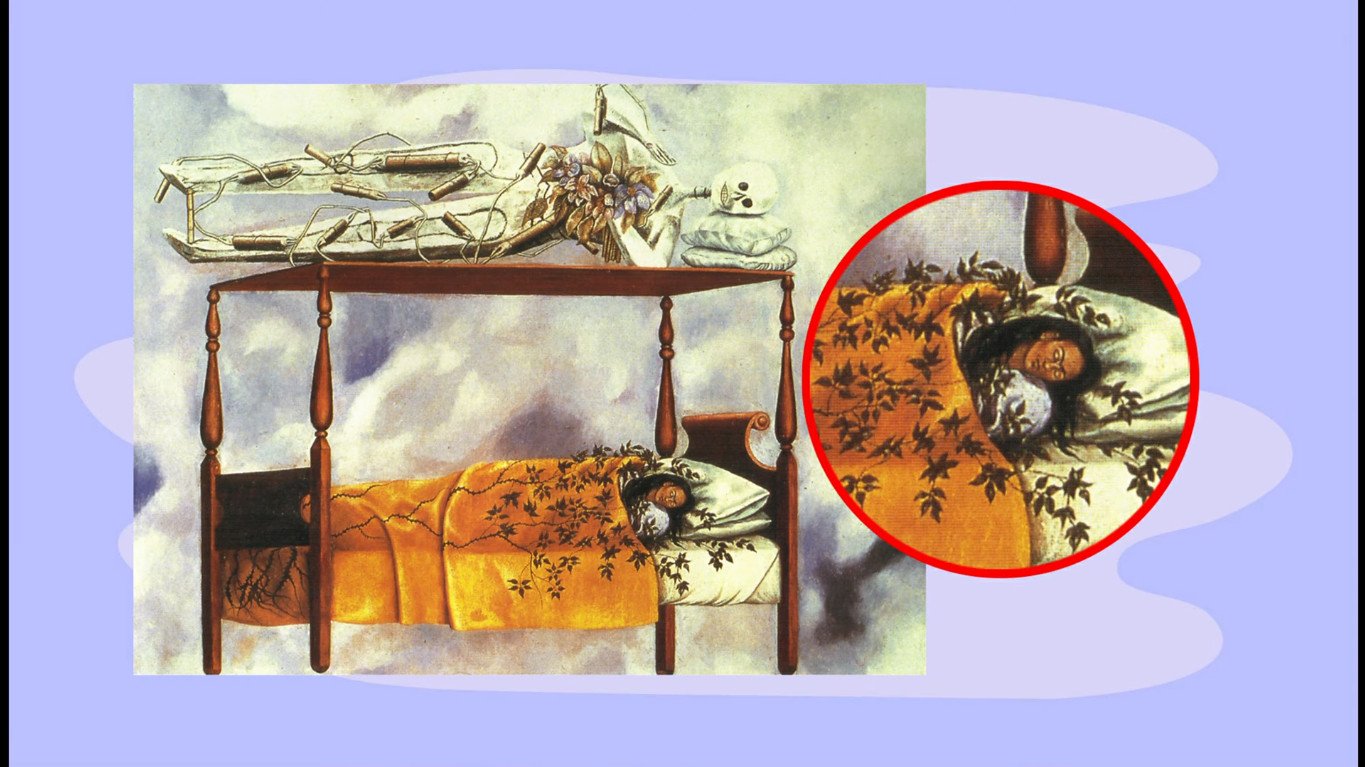
I hope the exist in joyful and I hope to never return.
FRIDA KAHLO
In 1954 Frida died of pneumonia. Her body was simply too broken to endure any more suffering. Throughout her life, Frida has had more than 30 operations. In the painting Broken Column, we see Frida Spine replaced by a broken pillar and her body being strapped to it.

Frida often painted her bodily suffering because usually after an operation she was bed-bound and had nothing to pass the time but her art. Here we see Frida as a deer trapped in a forest with multiple arrows shot into her body like the Christian Martyr Saint Sebastian.
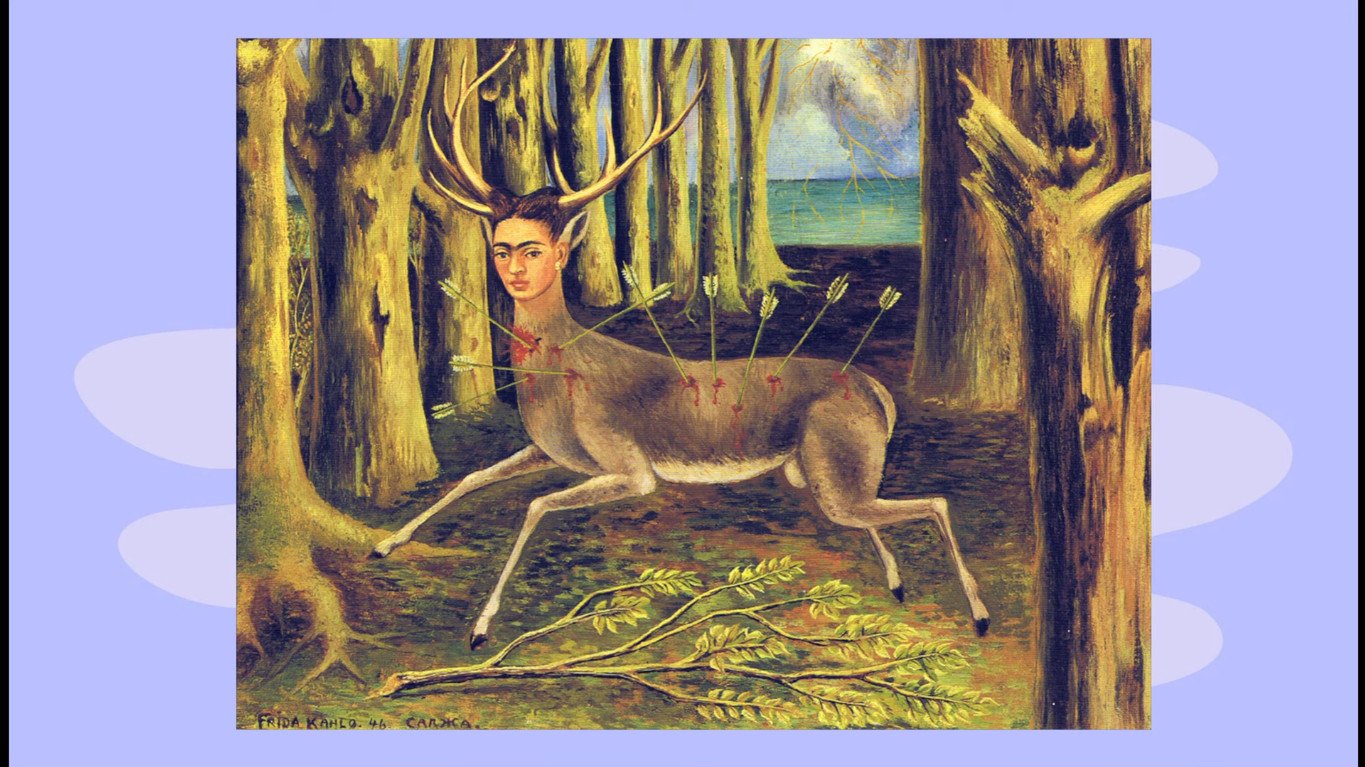
Here is a quote from the Frida movie that I believe really captures the essence of Frida’s art.
Her work is acid and yet tender. As hard as steel but as fine as a butterfly’s wing. Lovable as a smile, and cruel as the bitterness of life. It has agonized poetry on a canvas.
frida MOvie
American artist describe Frida’s art as
“A Ribbon around a bomb”
Andre Breton
Generally, Frida Kahlo is seen as a Surrealist Artist. Surrealists typically paint dreams and fantasies in a realistic style. However, Frida painted her own reality, her own suffering, and pain, her own inner experiences. Therefore some argue she is Symbolist Artists seeking to represent absolute truths symbolically through metaphorical images. Because she often used ancient Mexican mythology in her art, as well as Catholic Symbols she is also seen as a New Objective Artist. Whatever you classify Frida as her art was truly original and like nothing the world has ever seen before.
They thought I was a Surrealist, but I wasn’t. I never painted dreams. I painted my own reality.
FRIDA KAHLO
So why do we remember Frida today?
She has cemented herself in history as a true Mexican Icon making her countrymen proud of their heritage. She also symbolizes Female power and independence breaking away from gender norms at the time. Her story is a story of beauty from ashes. World Wide she is a symbol of hope, power, of empowerment, for a variety of people who are undergoing adverse conditions.
Frida used art as therapy. She found a way to paint pain. Even though she only made between 150 – and 200 paintings she kept a visual diary with vivid drawings always creating. Frida is the poster child for misery – and resiliency. Most of her paintings are small in size and yet they portray monumental scenes of death, pain, and suffering. Since these themes are universal, Frida has become an artist to whom we can all relate.
Despite all of Frida’s adversity she chose to embrace and celebrate life. She had a voice. She mattered. She created a voice for herself in a time when people like her did not have a voice. Her life is a testimony that we are capable of success despite the hand we are dealt.
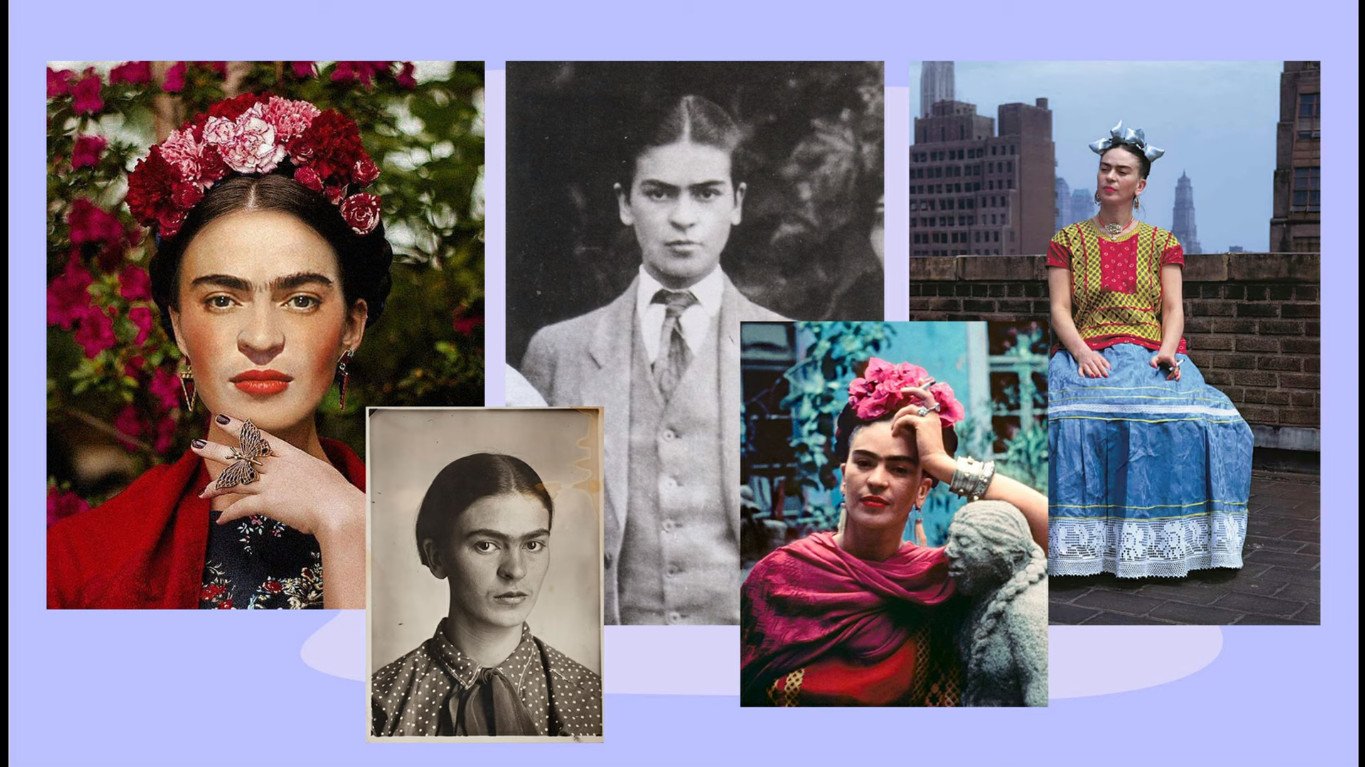
So next time you feel sad, grab a pencil and sketchbook, it will help you not only to voice the pain but deal with it.
WATCH OUR VIDEO ON Frida Kahlo here.
At the end of the day, we can endure much more than we think we can
FRIDA KAHLO
BUY OUR FRIDA KAHLO WORKSHEETS
Worksheet pack that includes notes and fun activities. Ideal for art students and history students to learn more about the legendary artist Frida Kahlo


